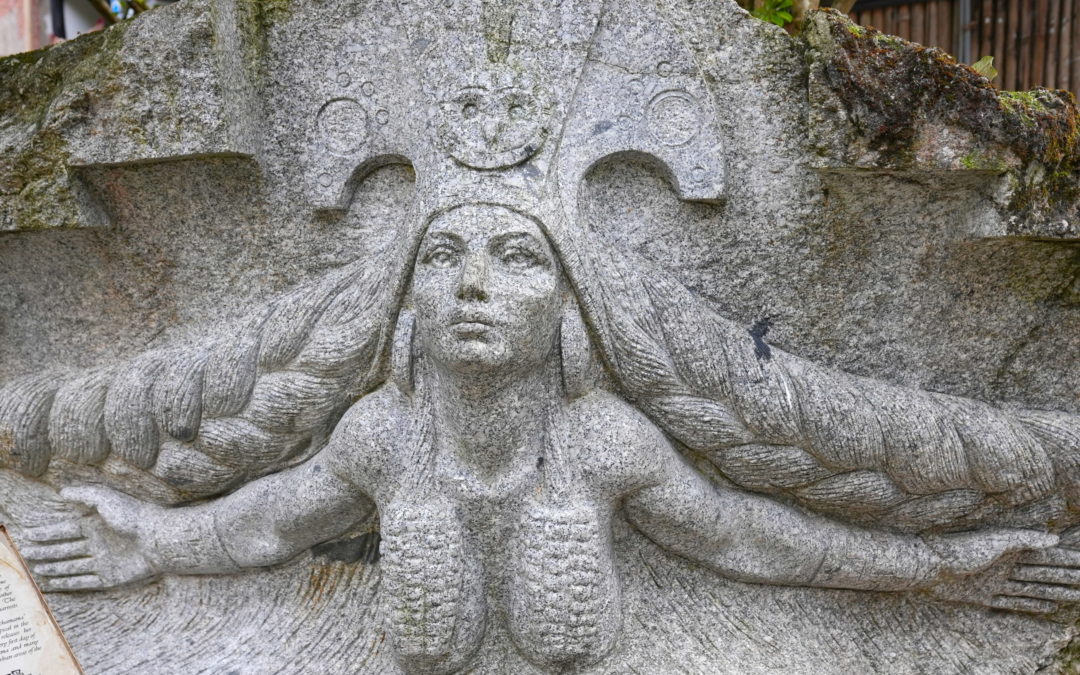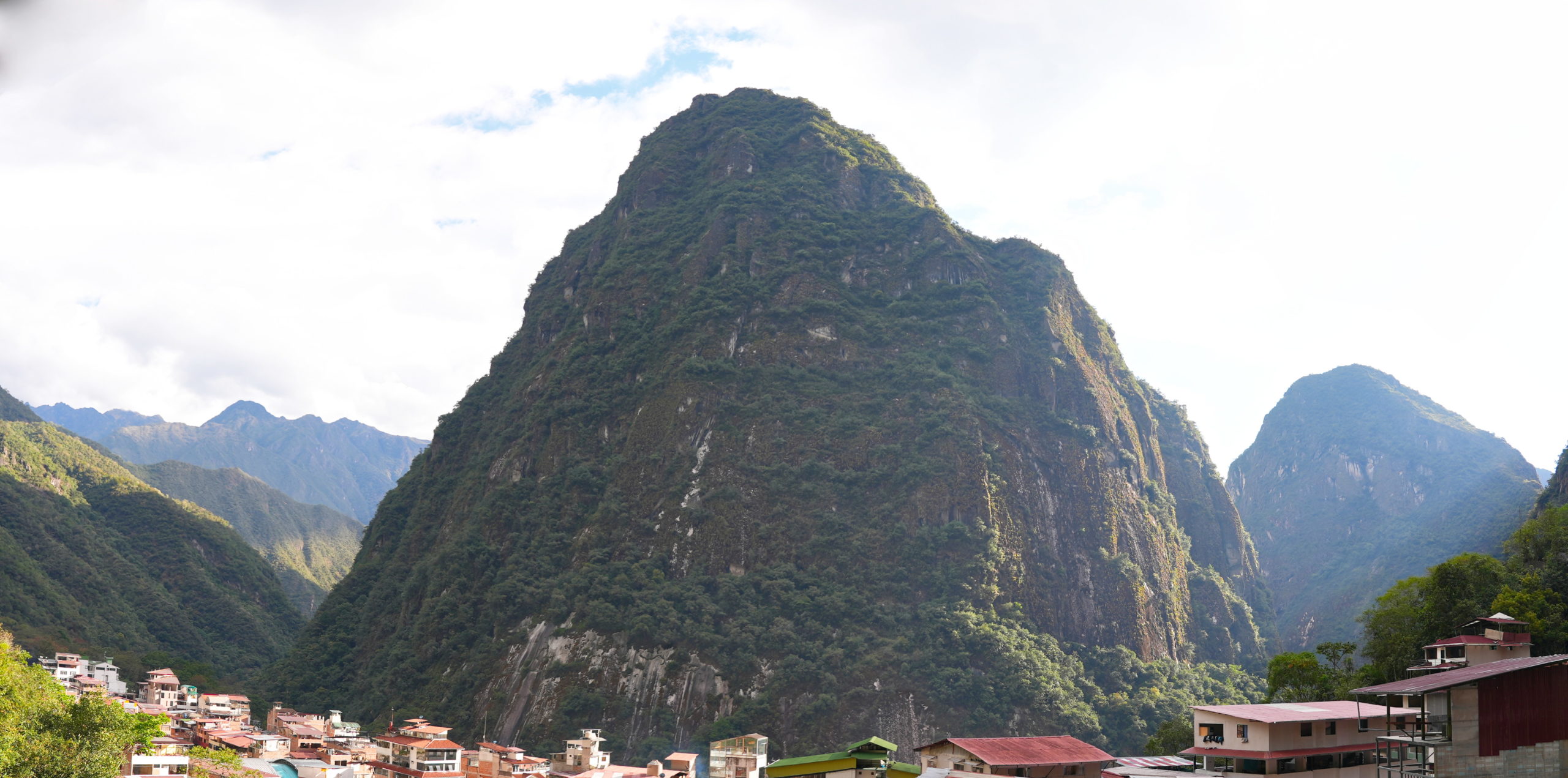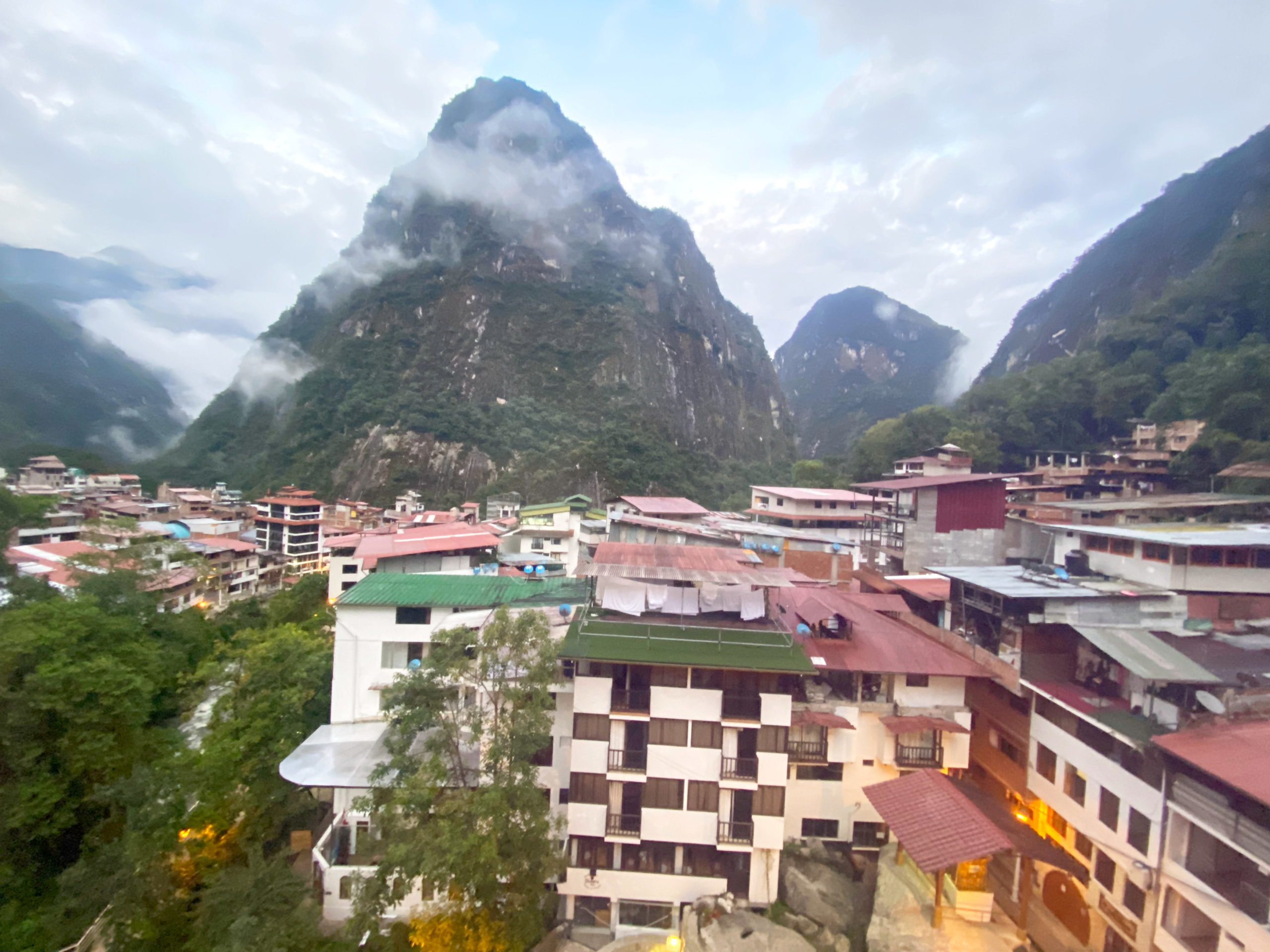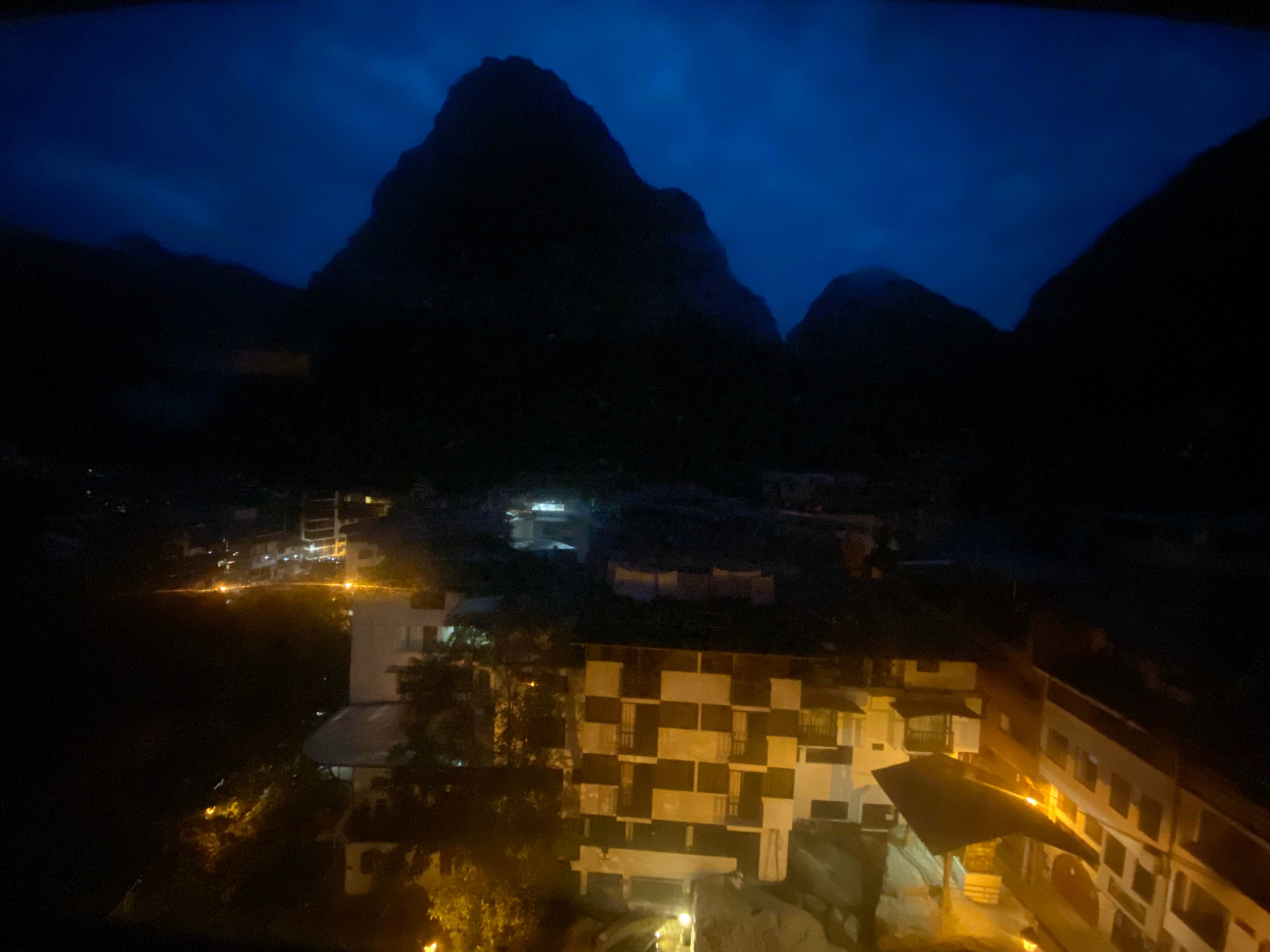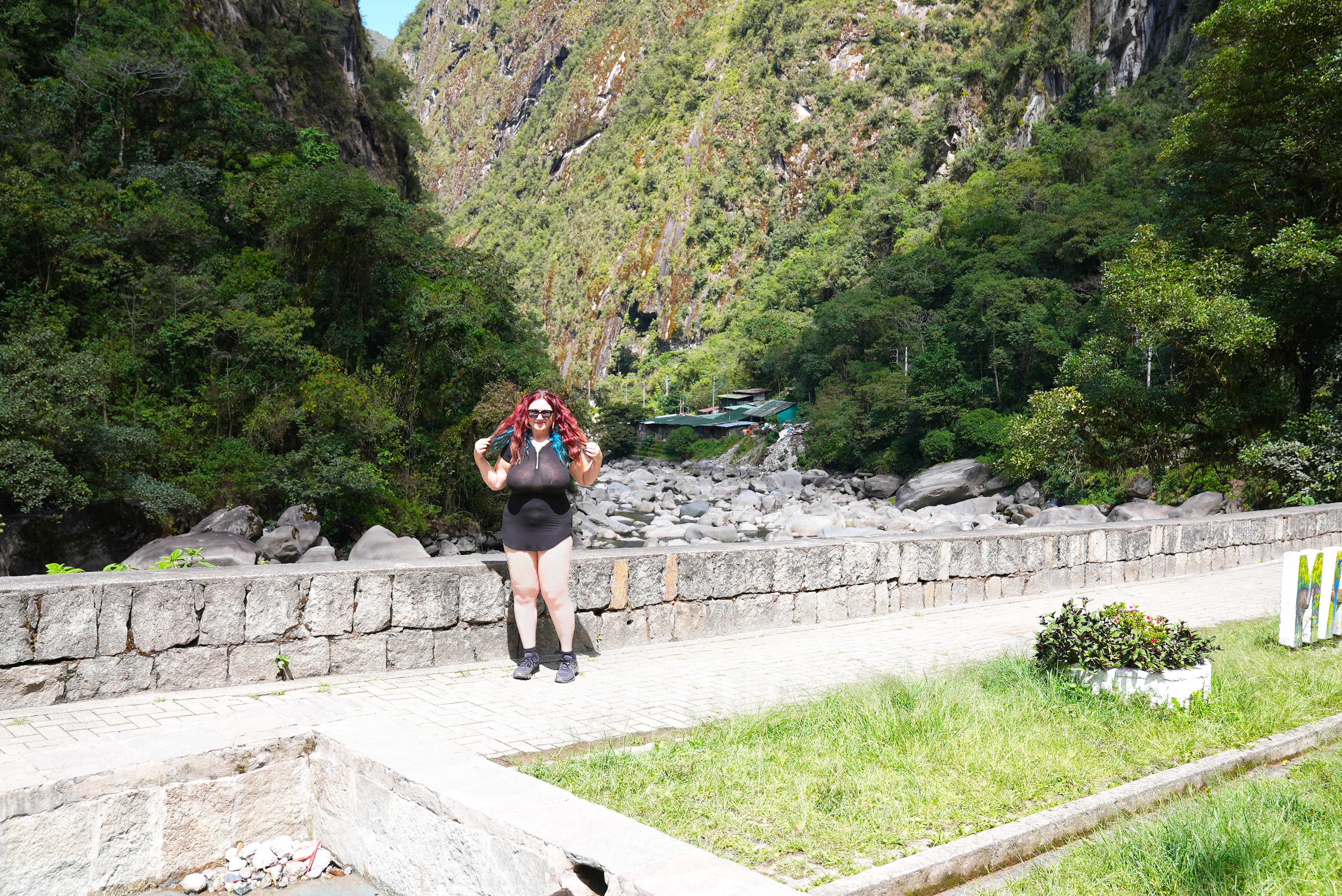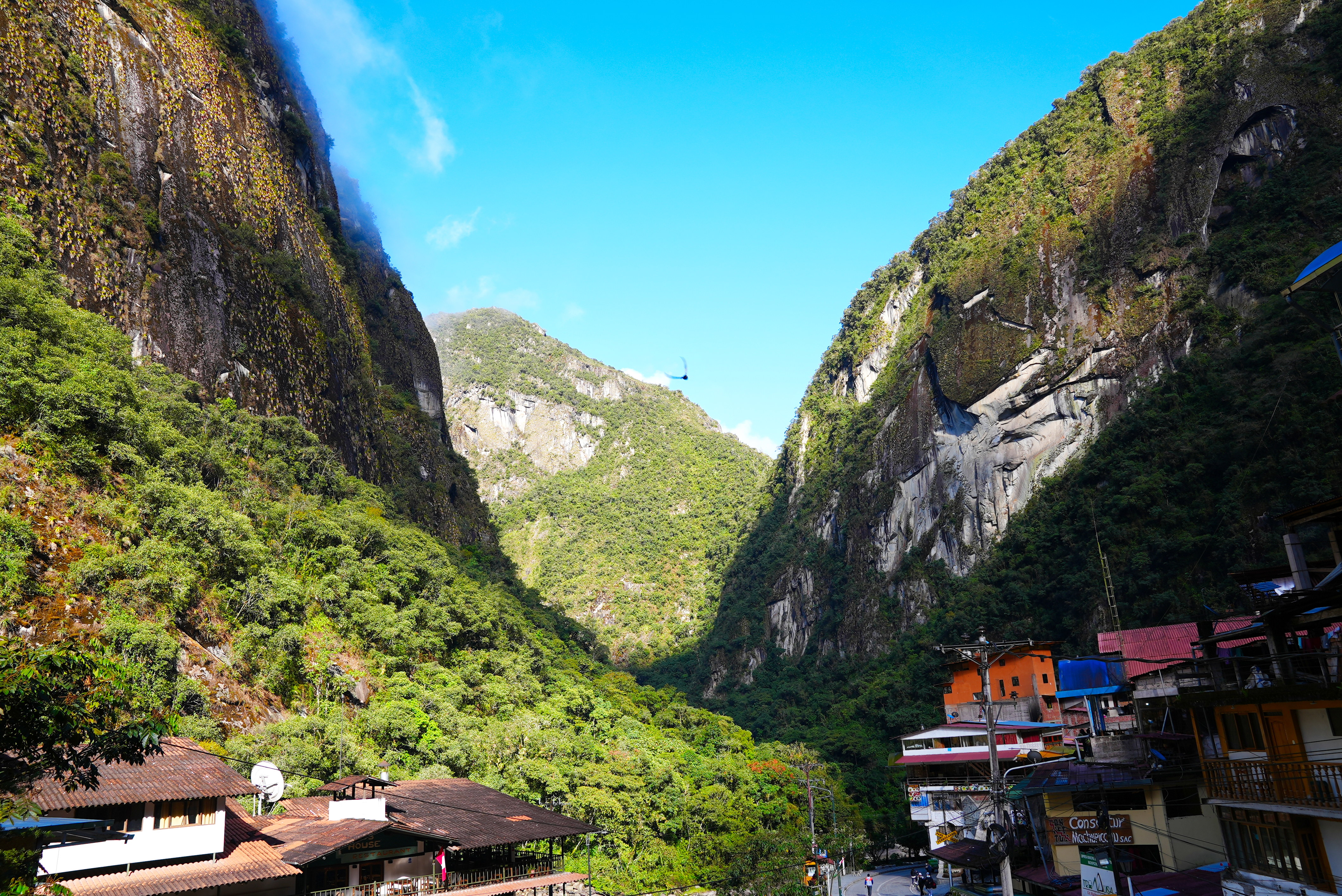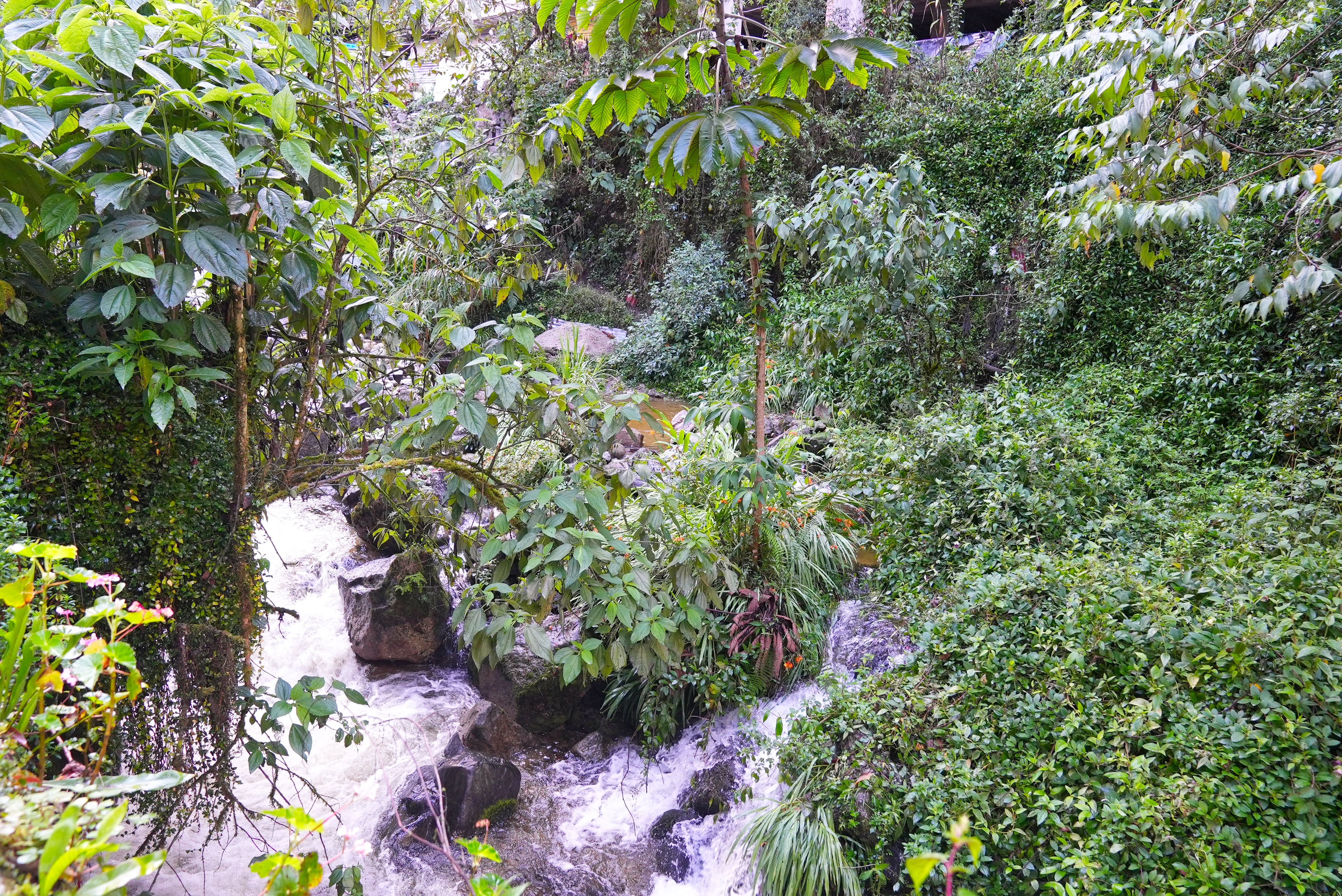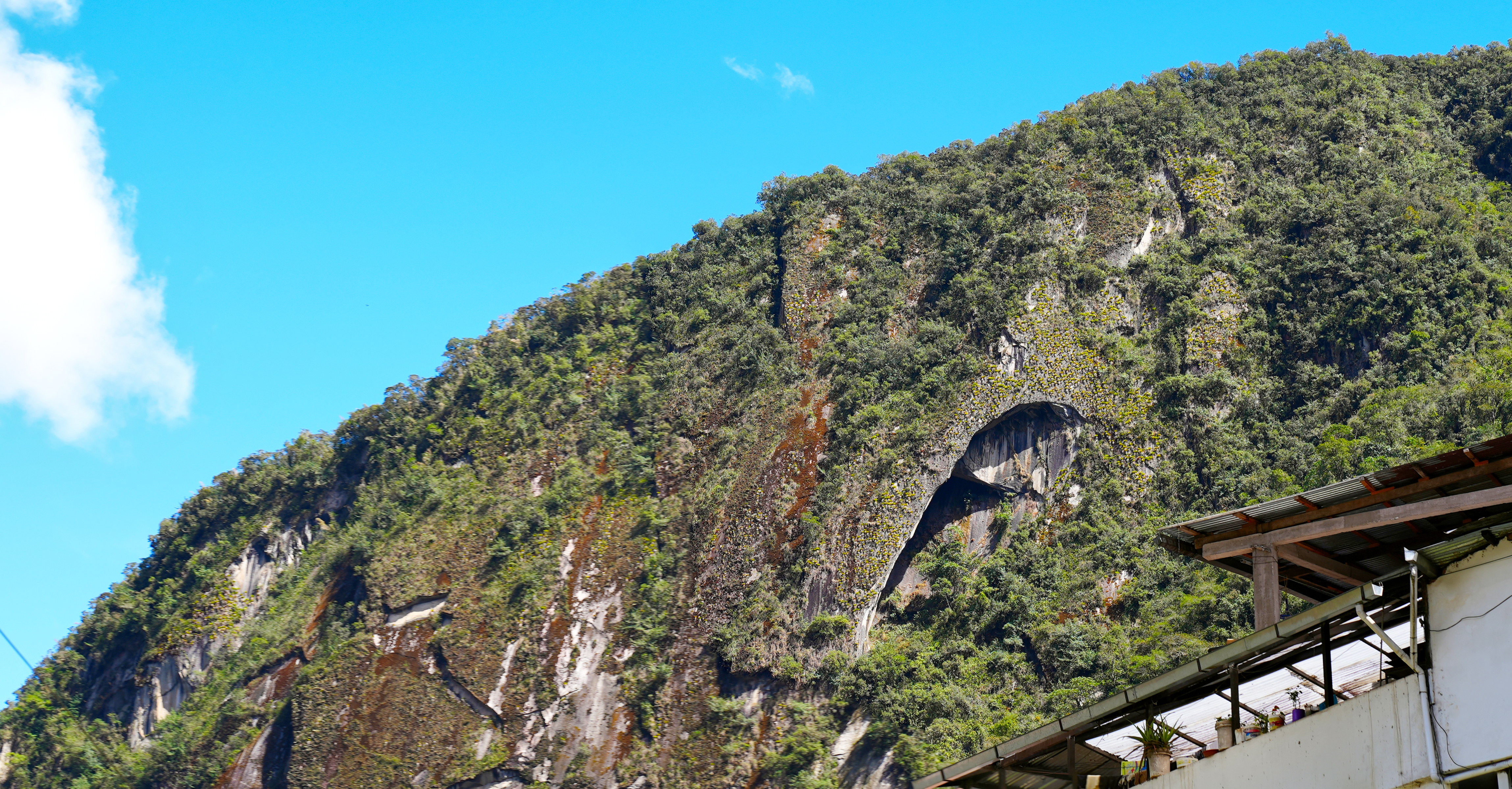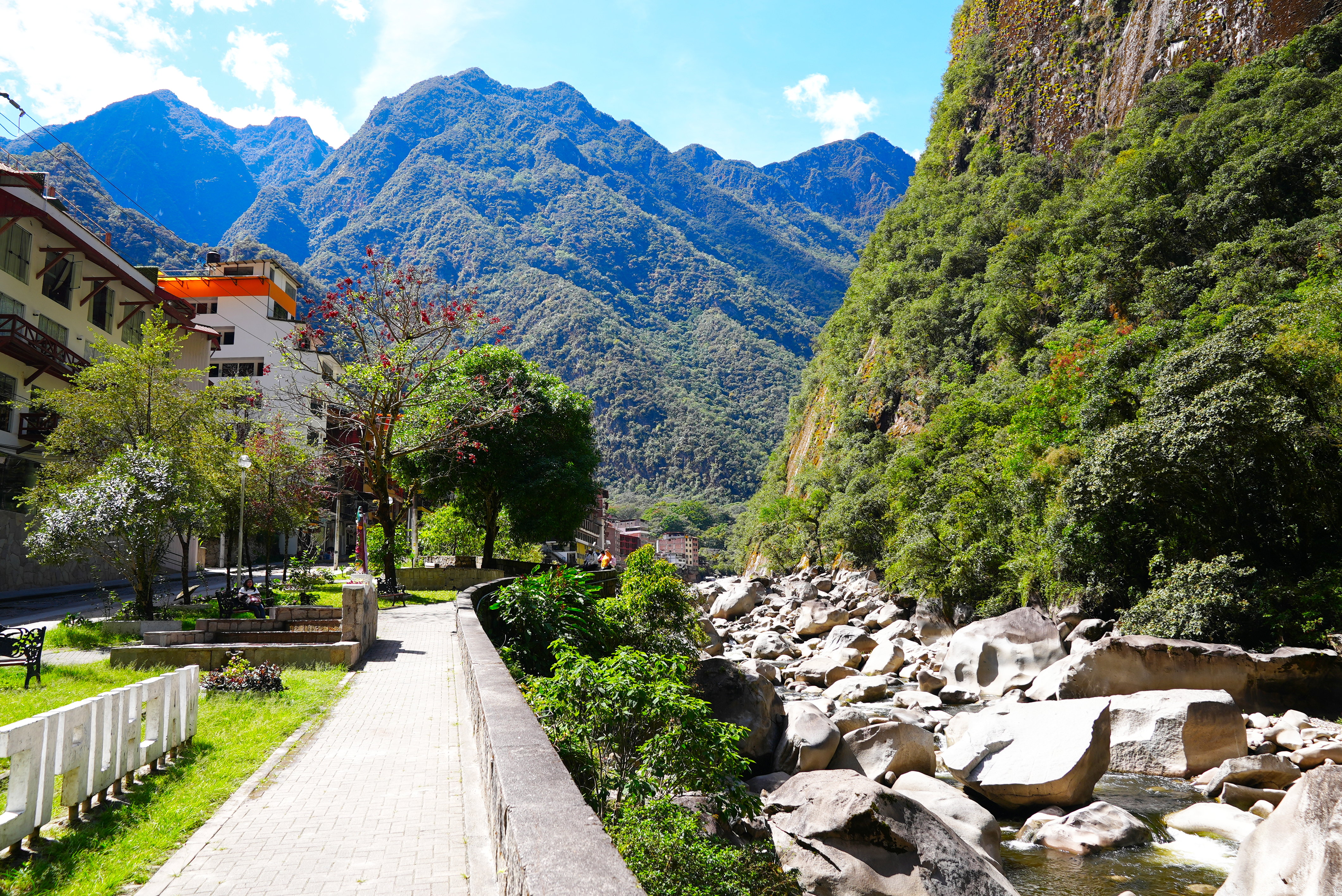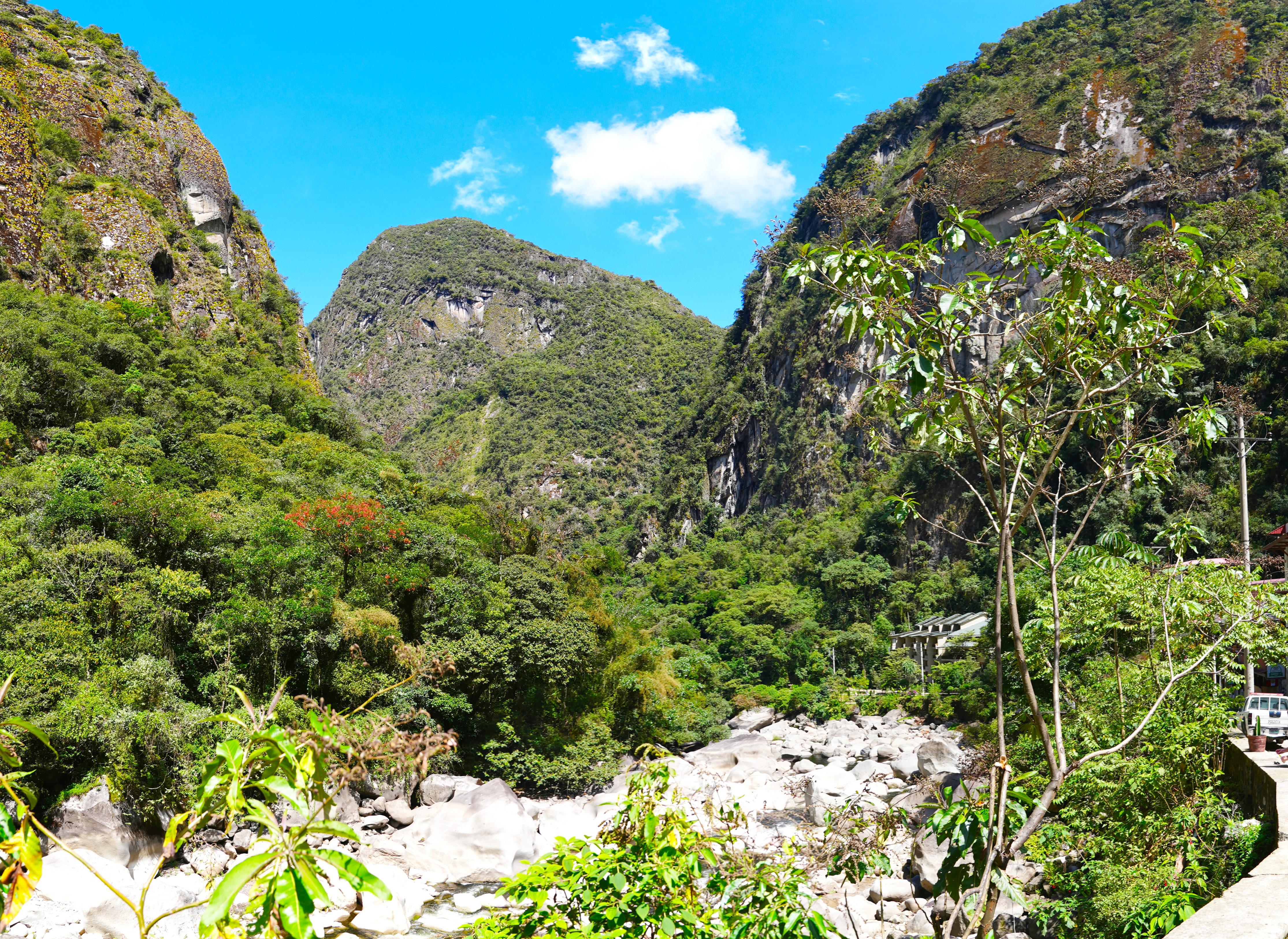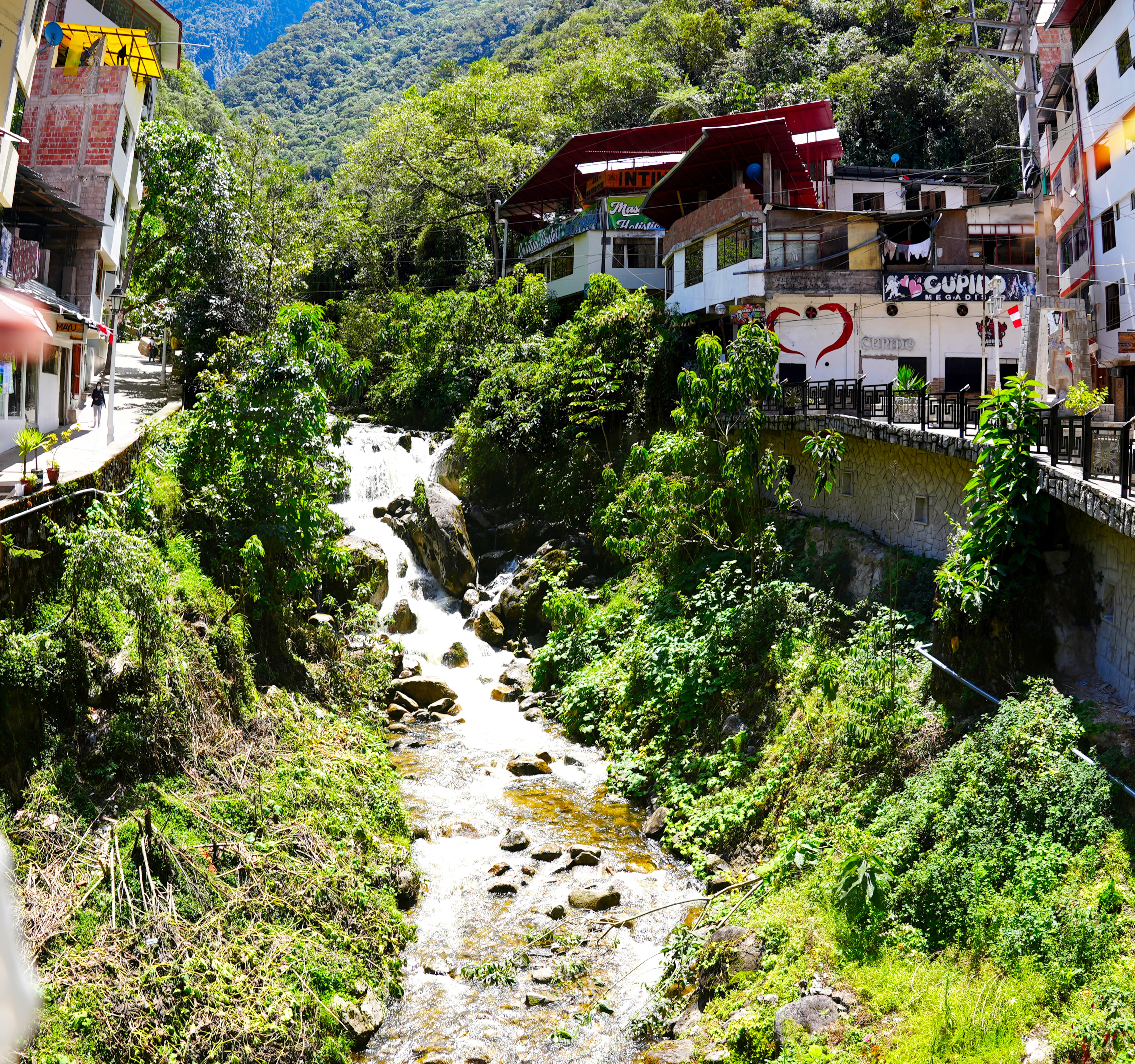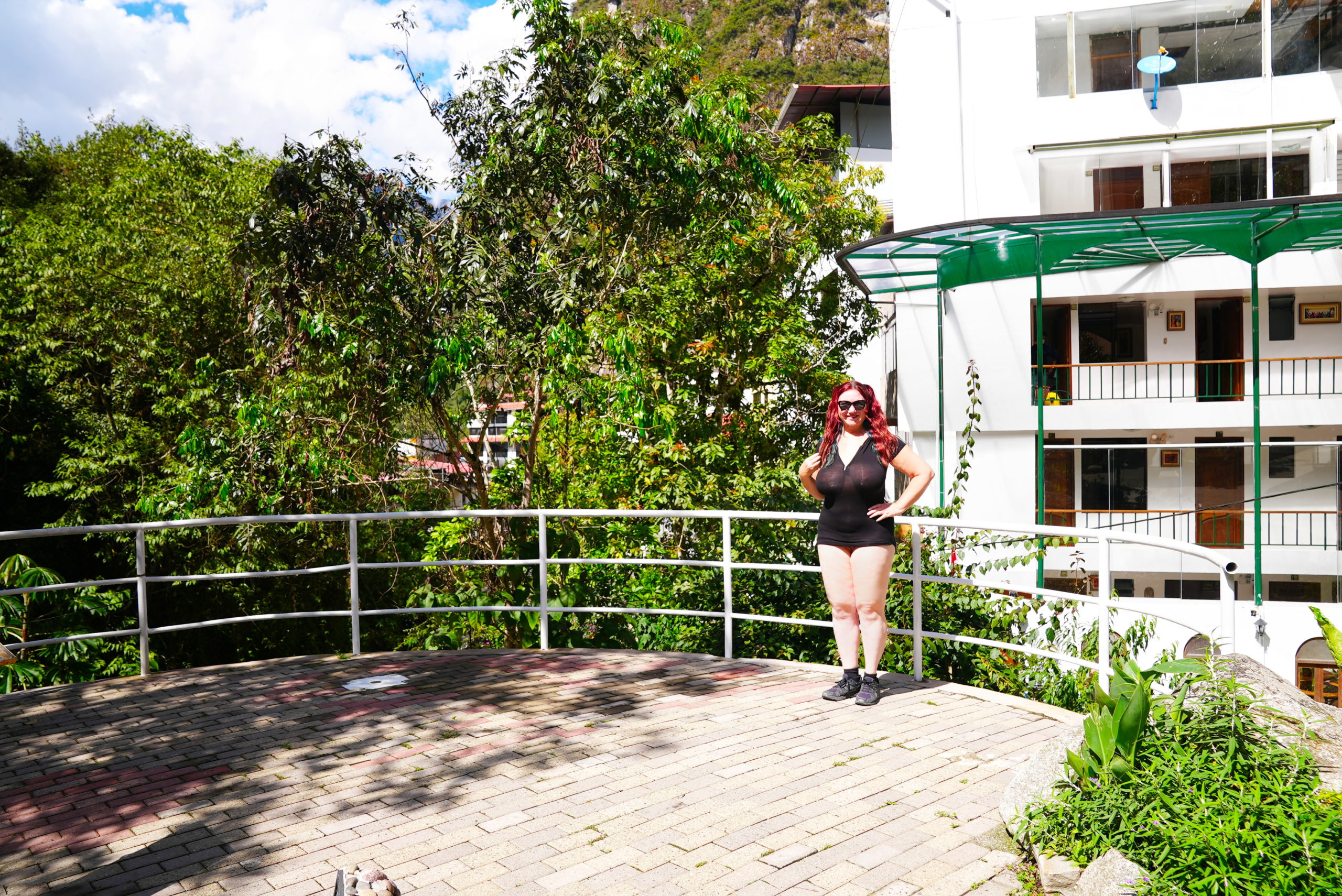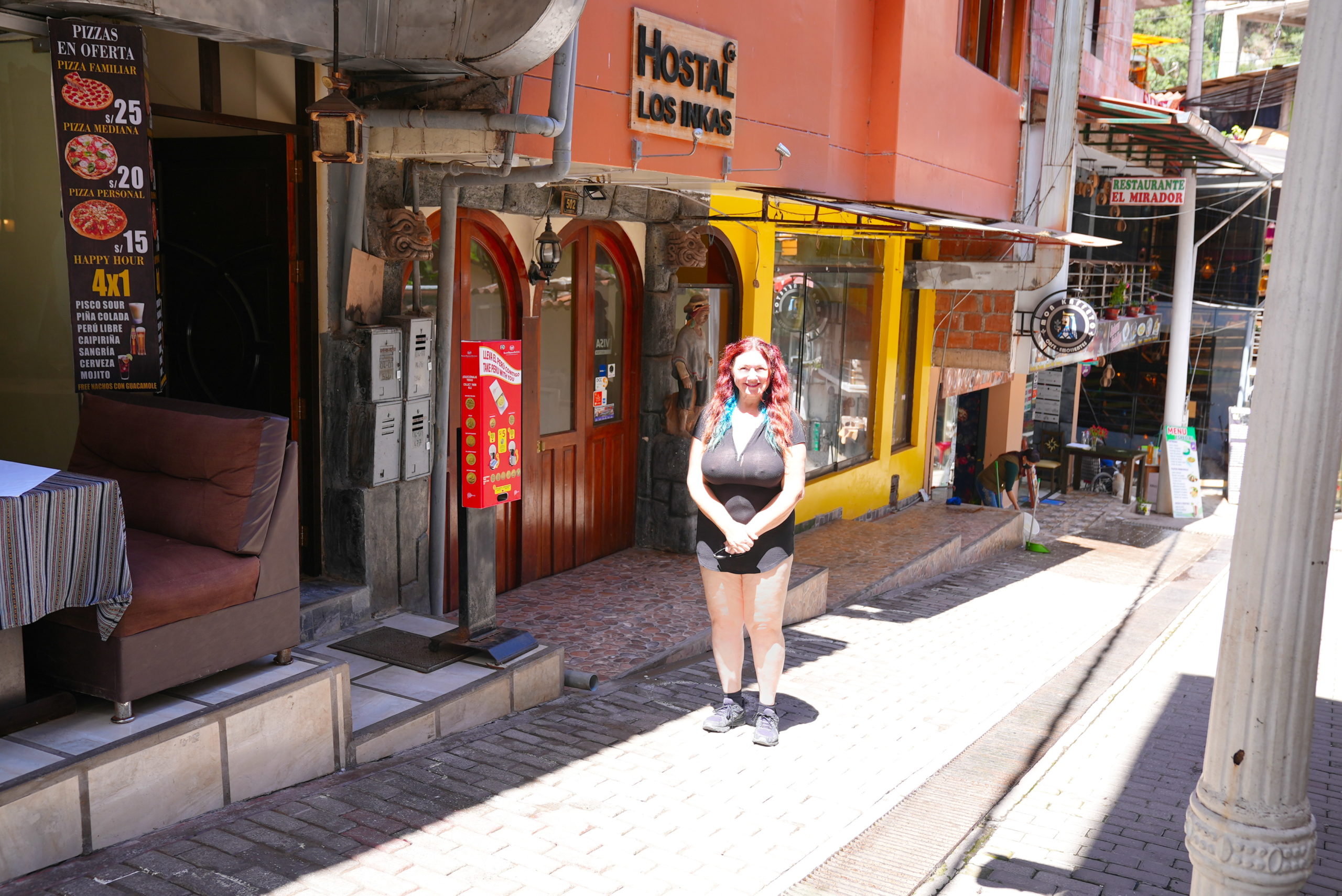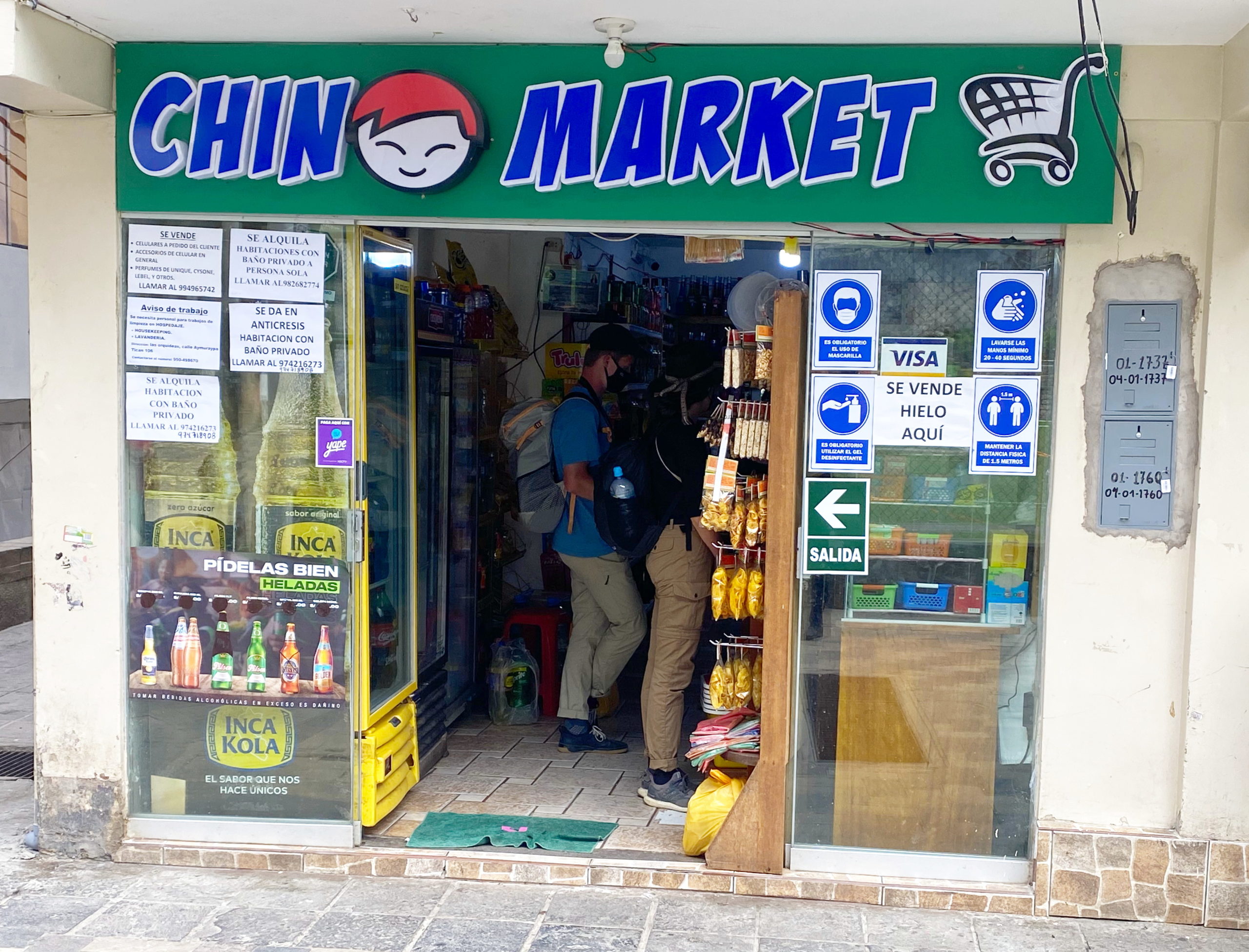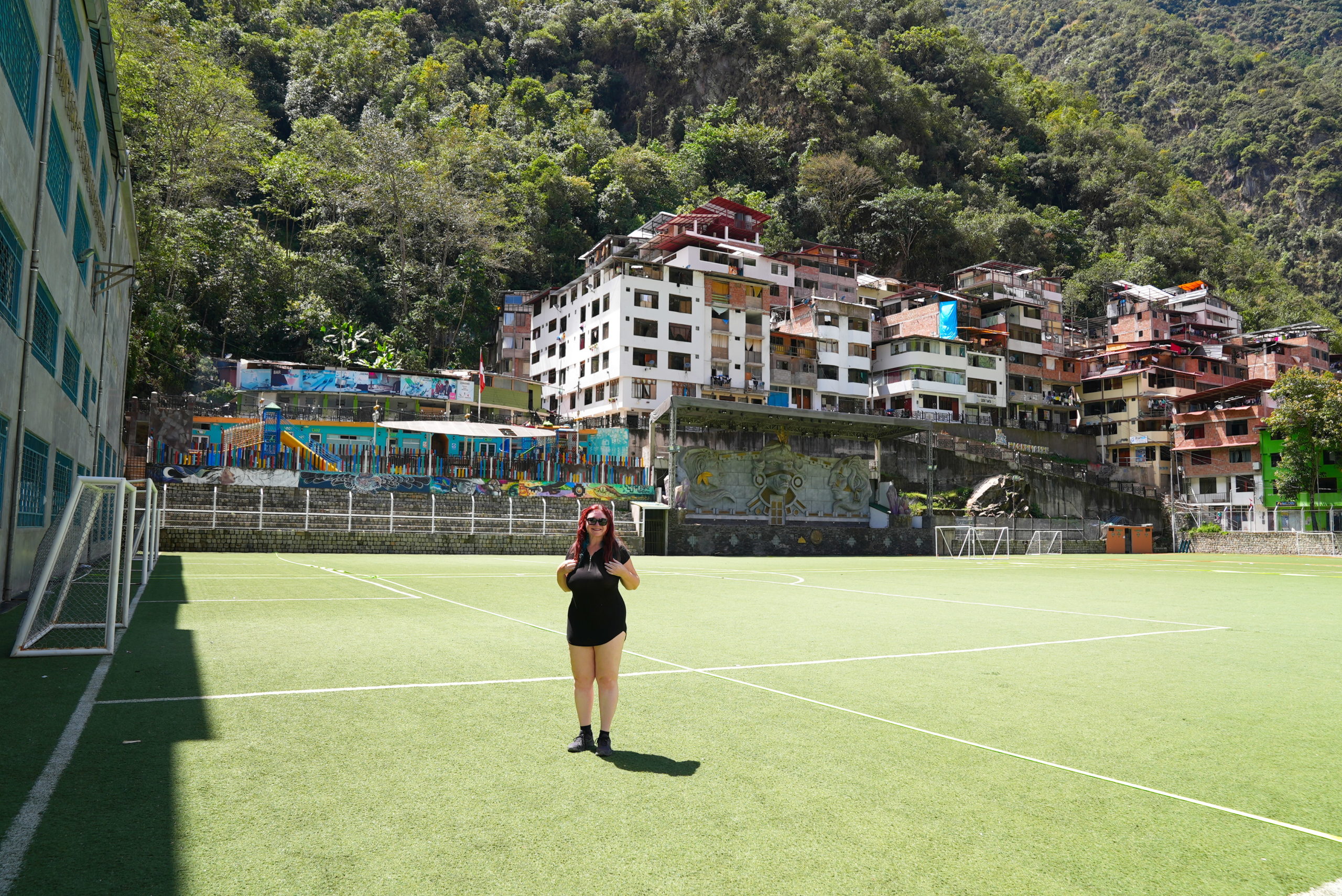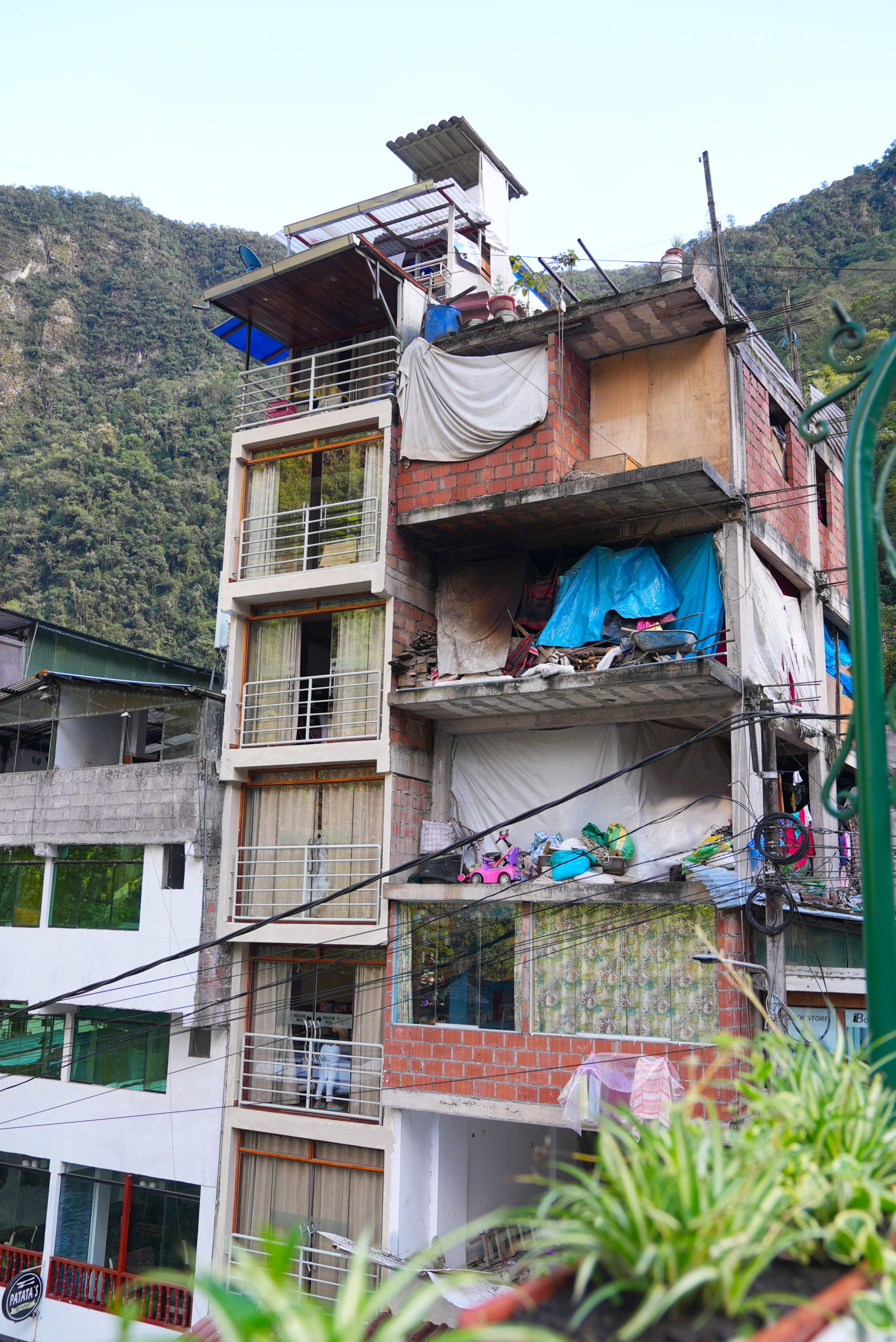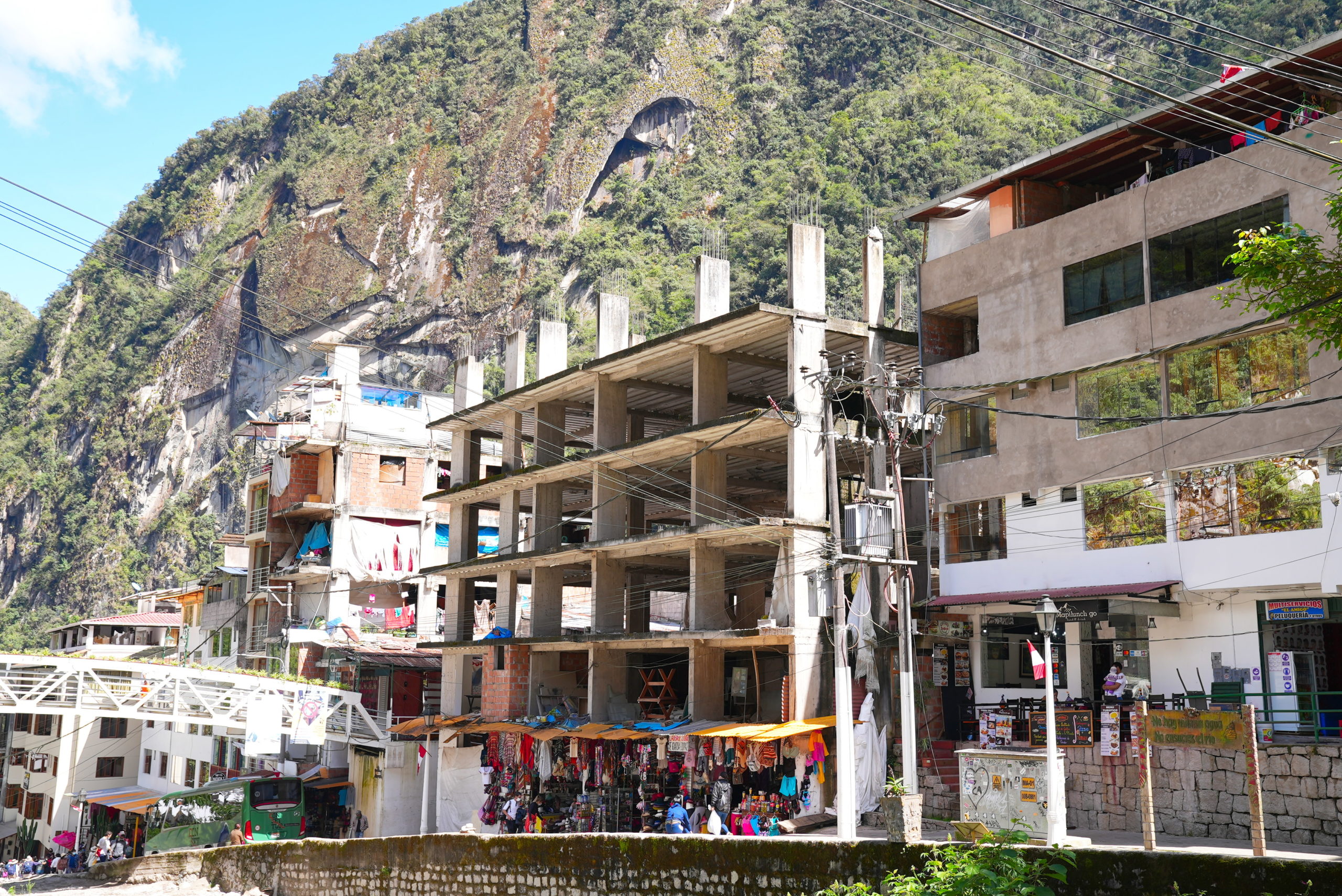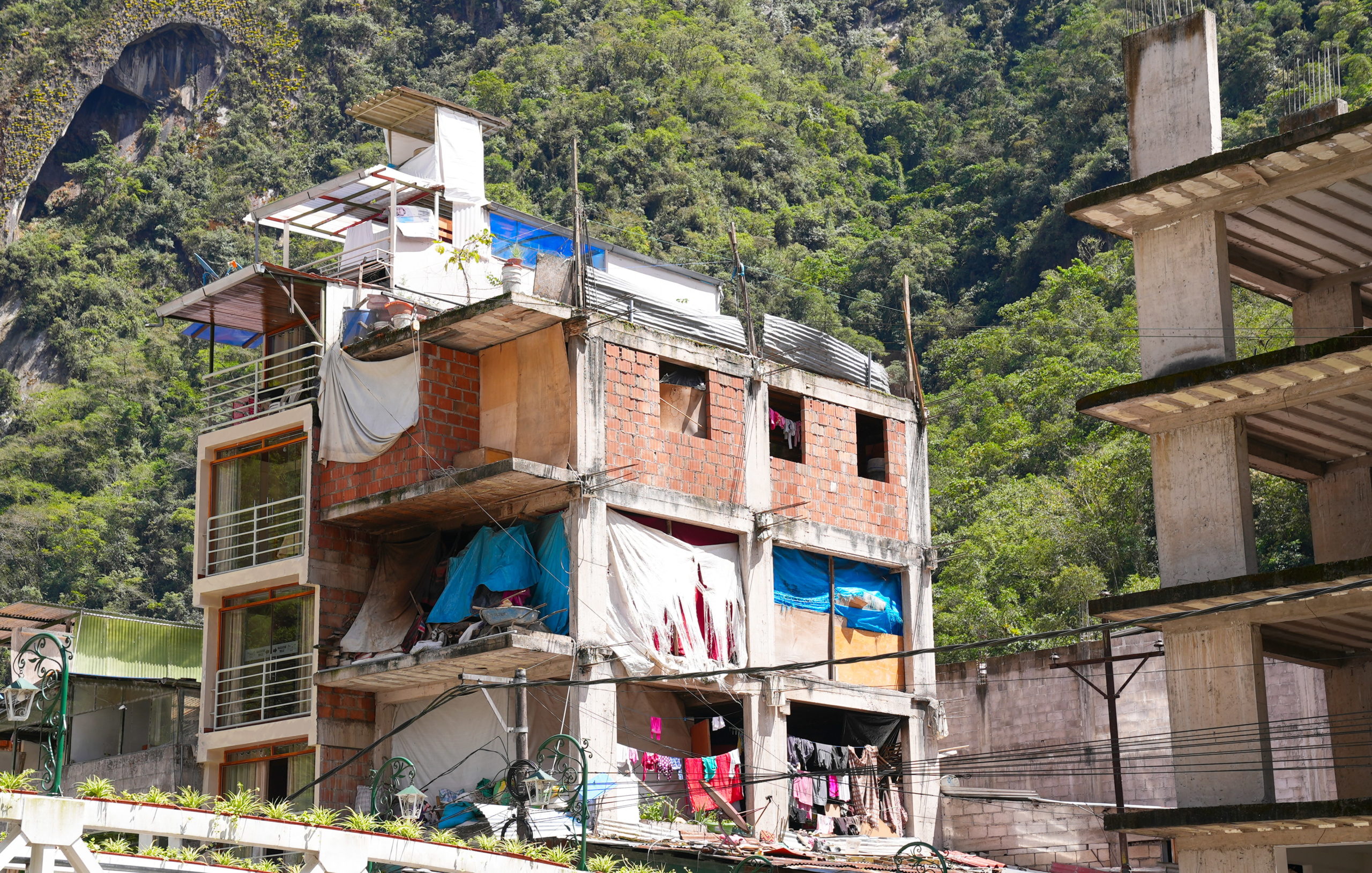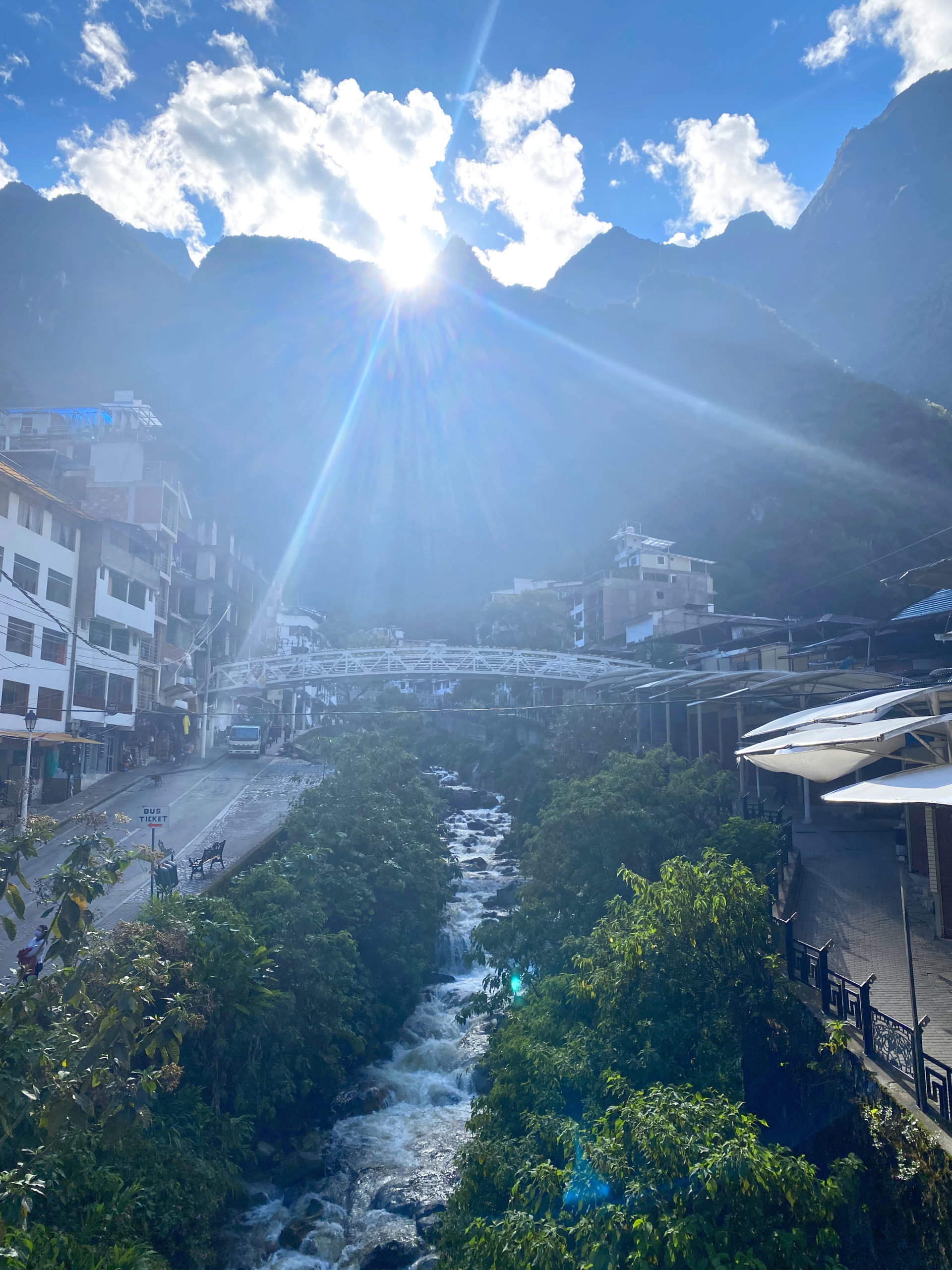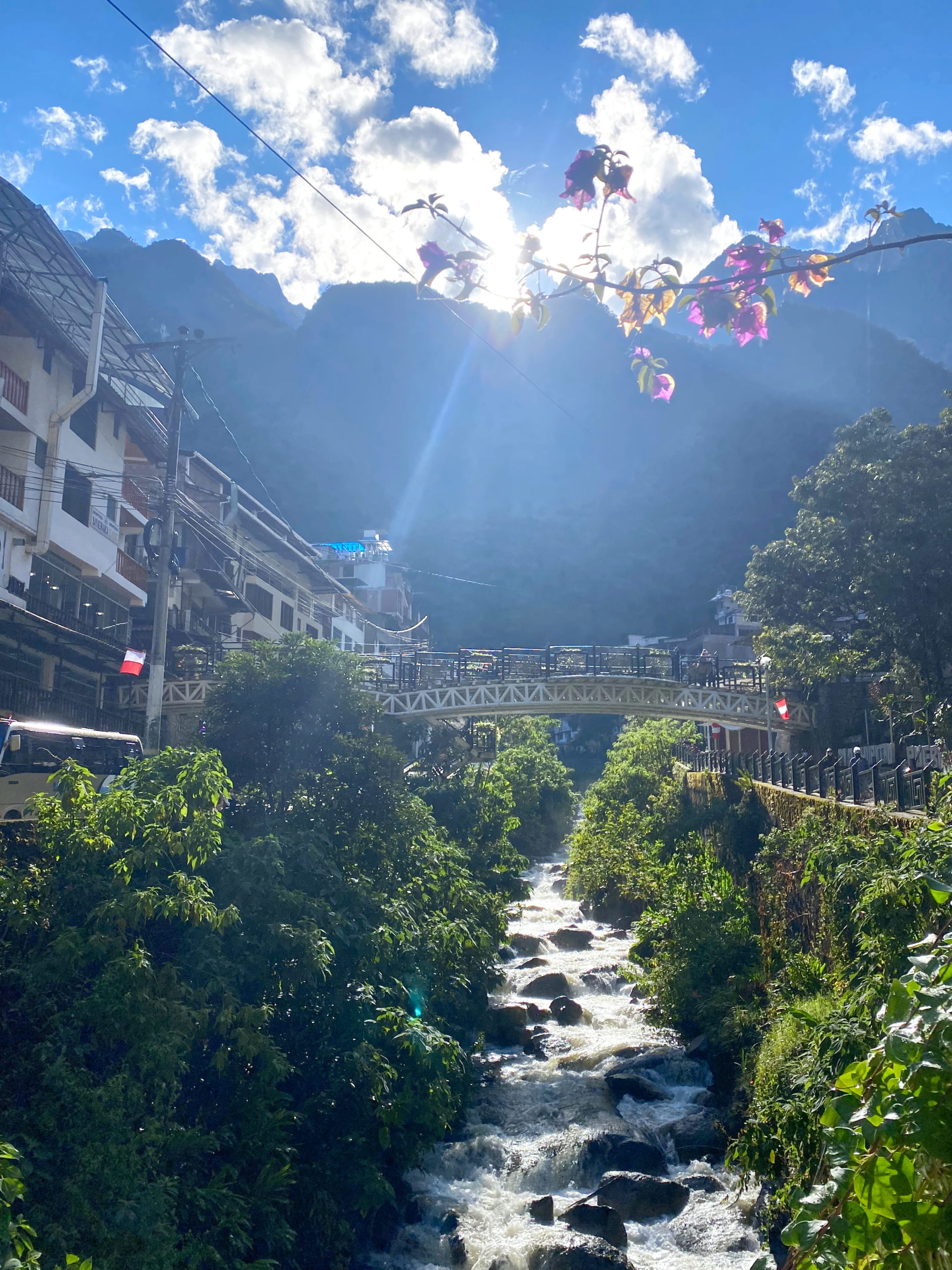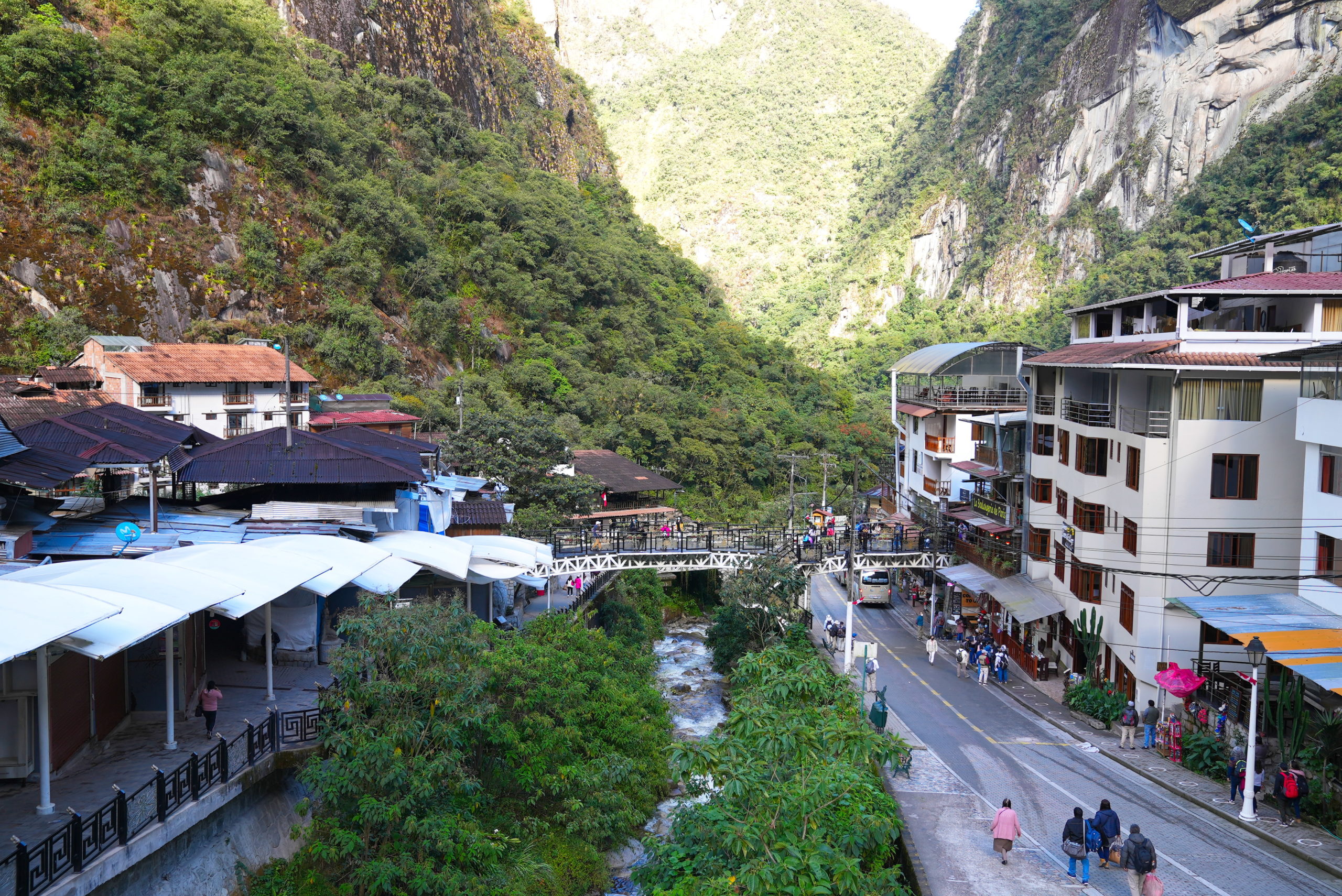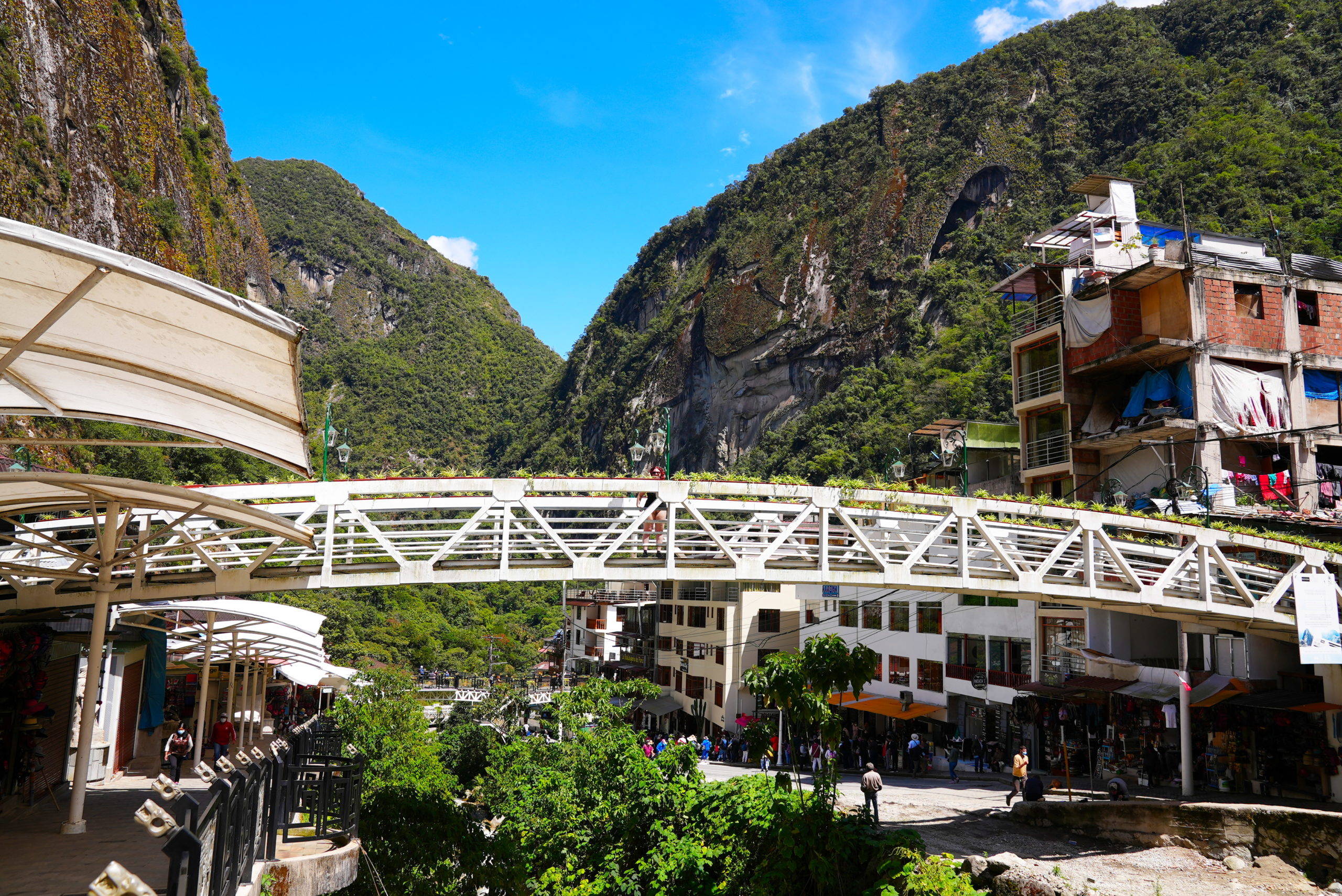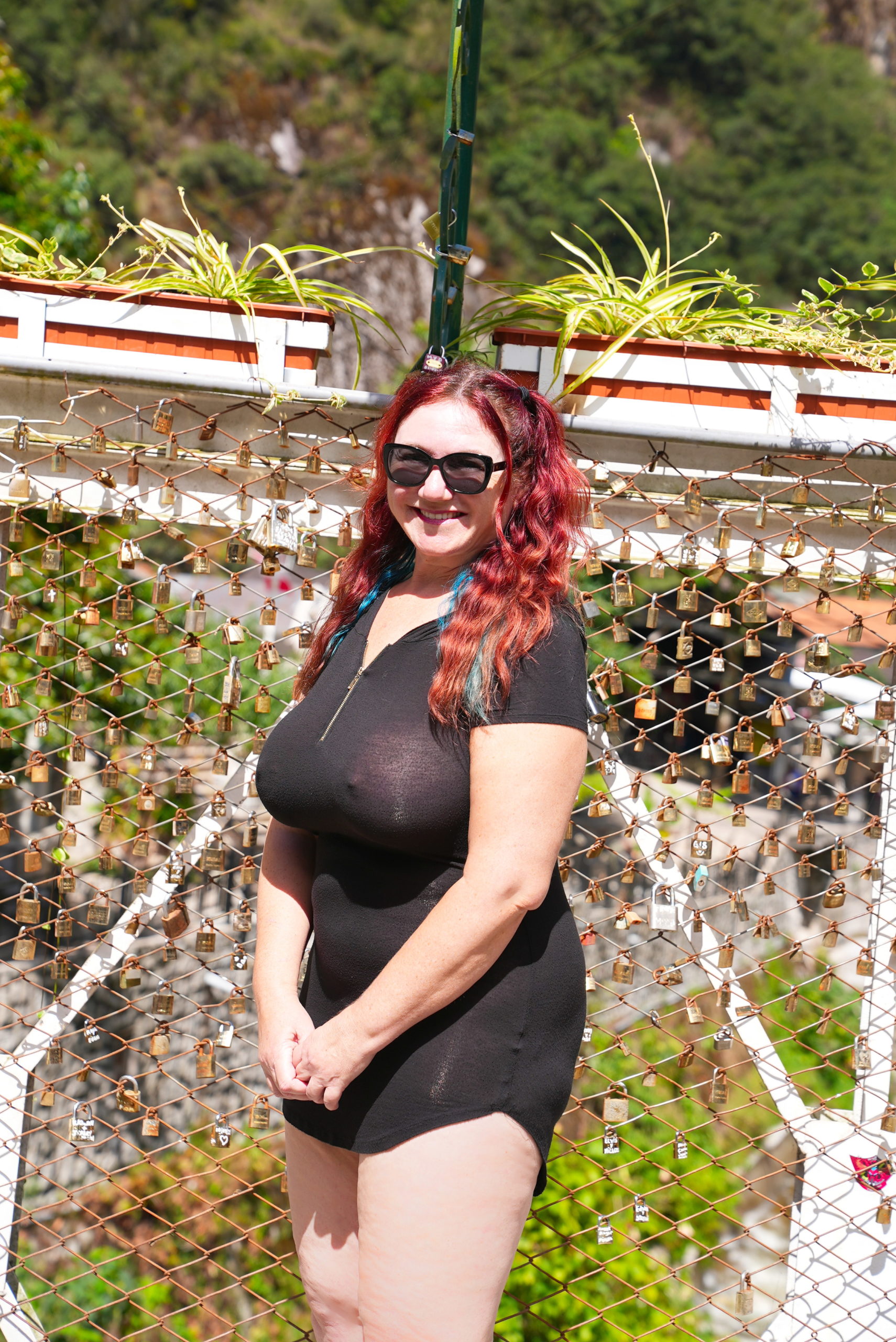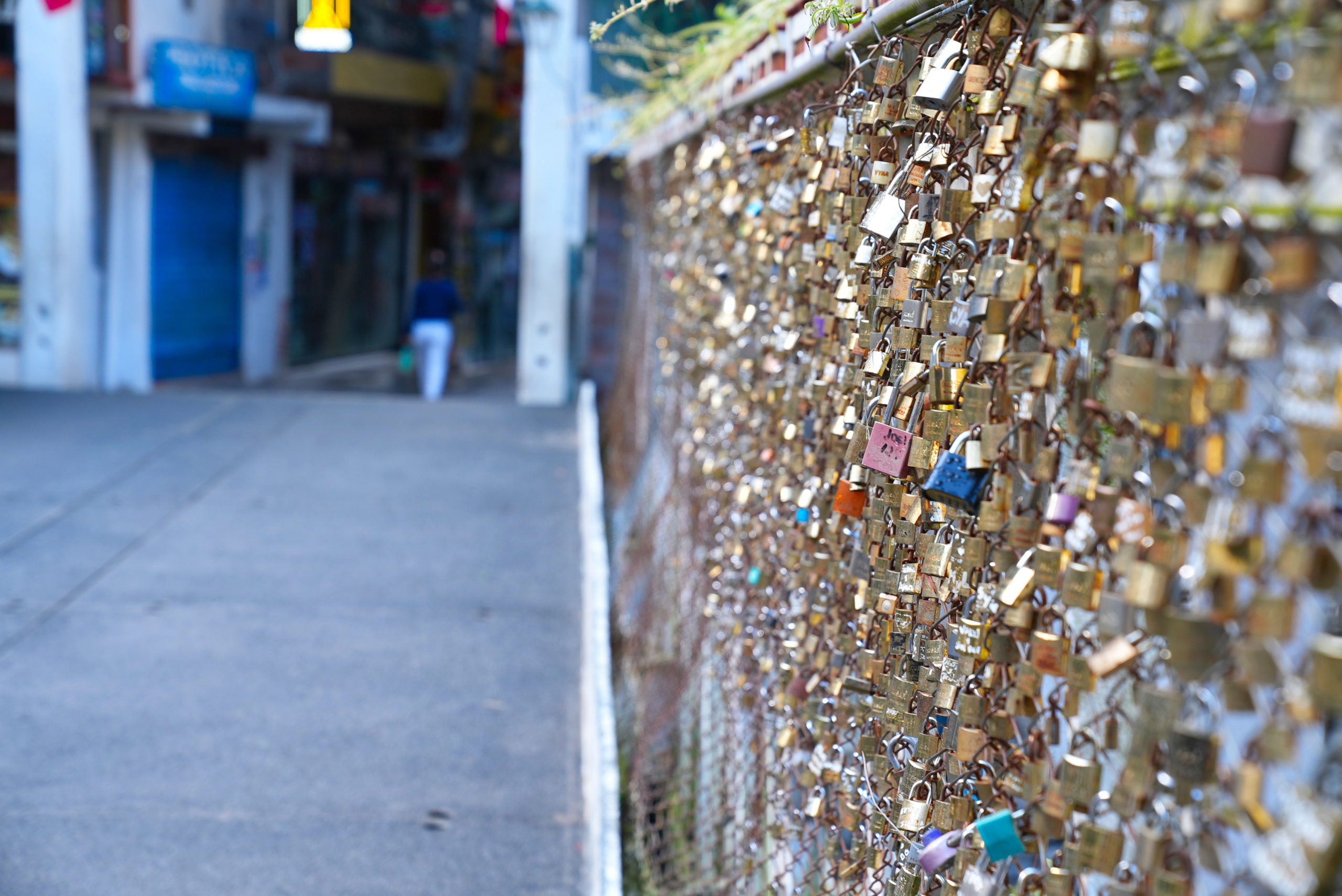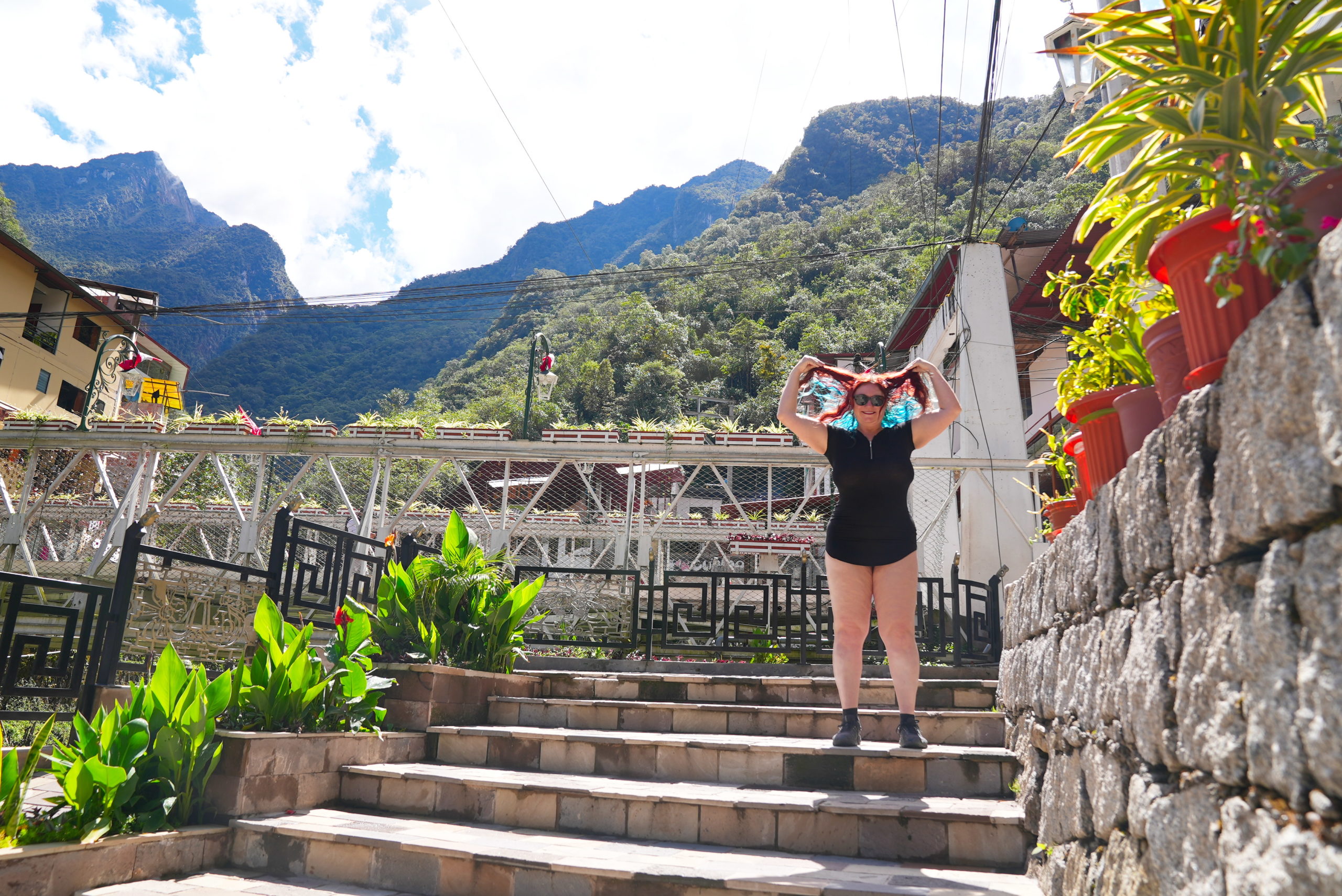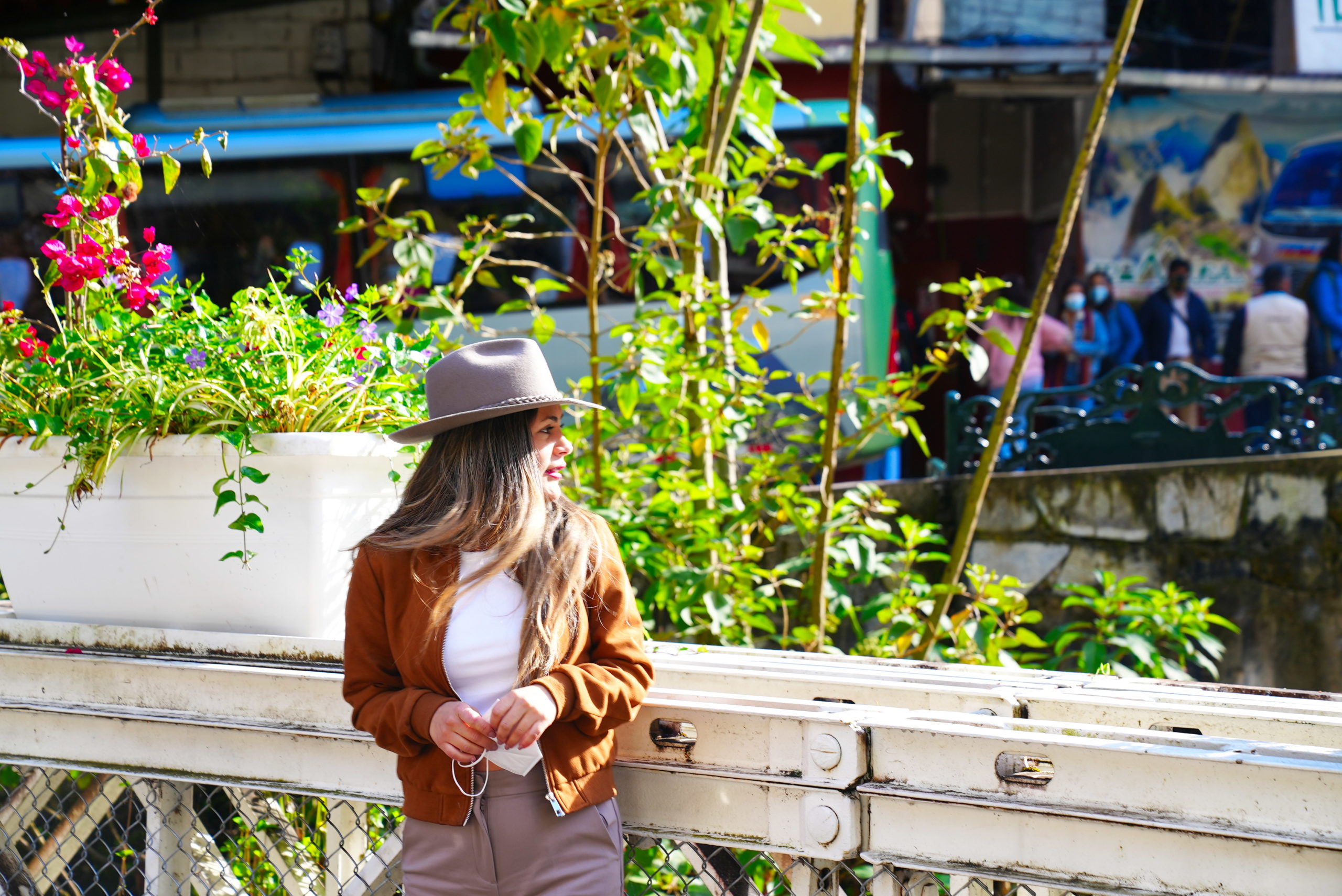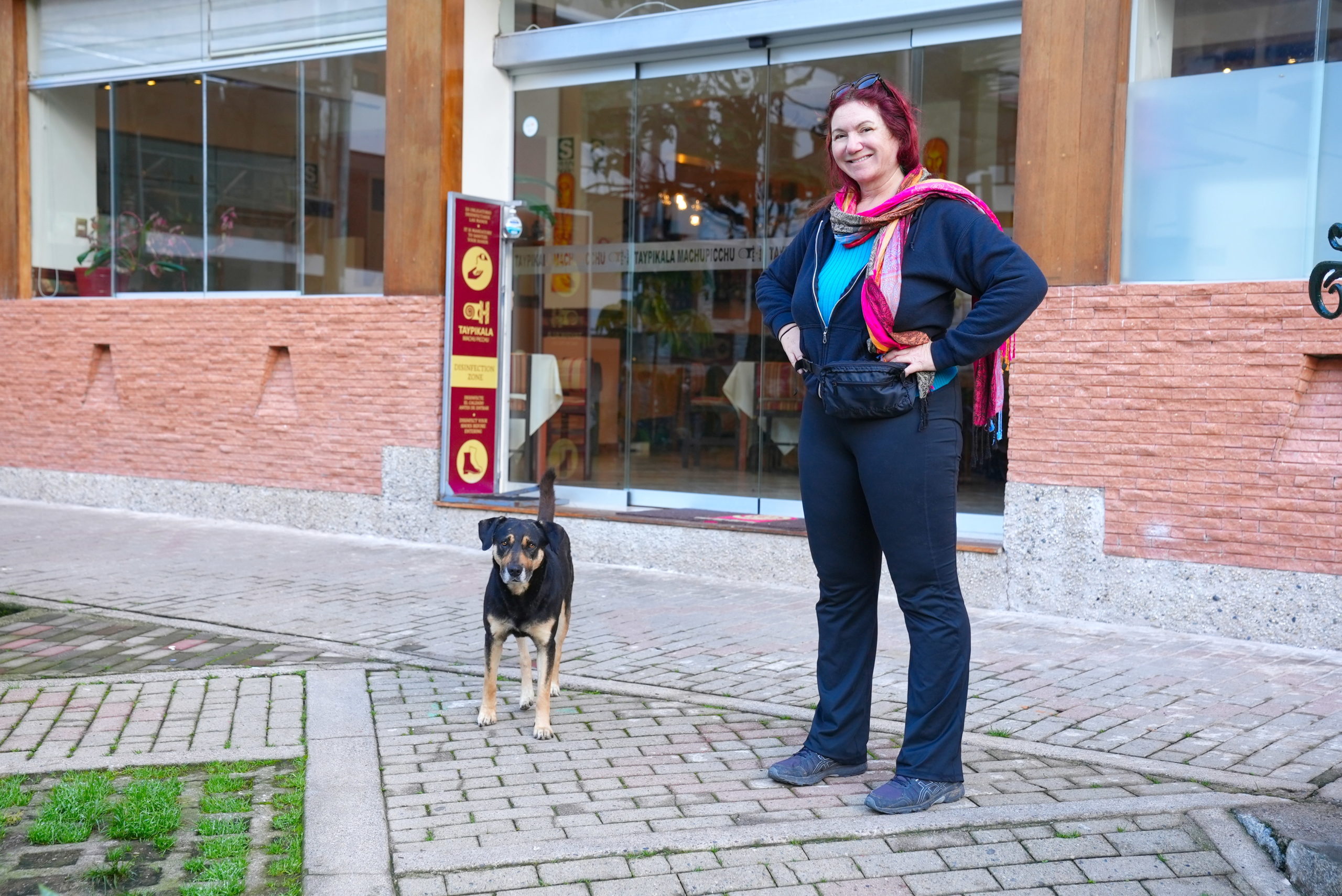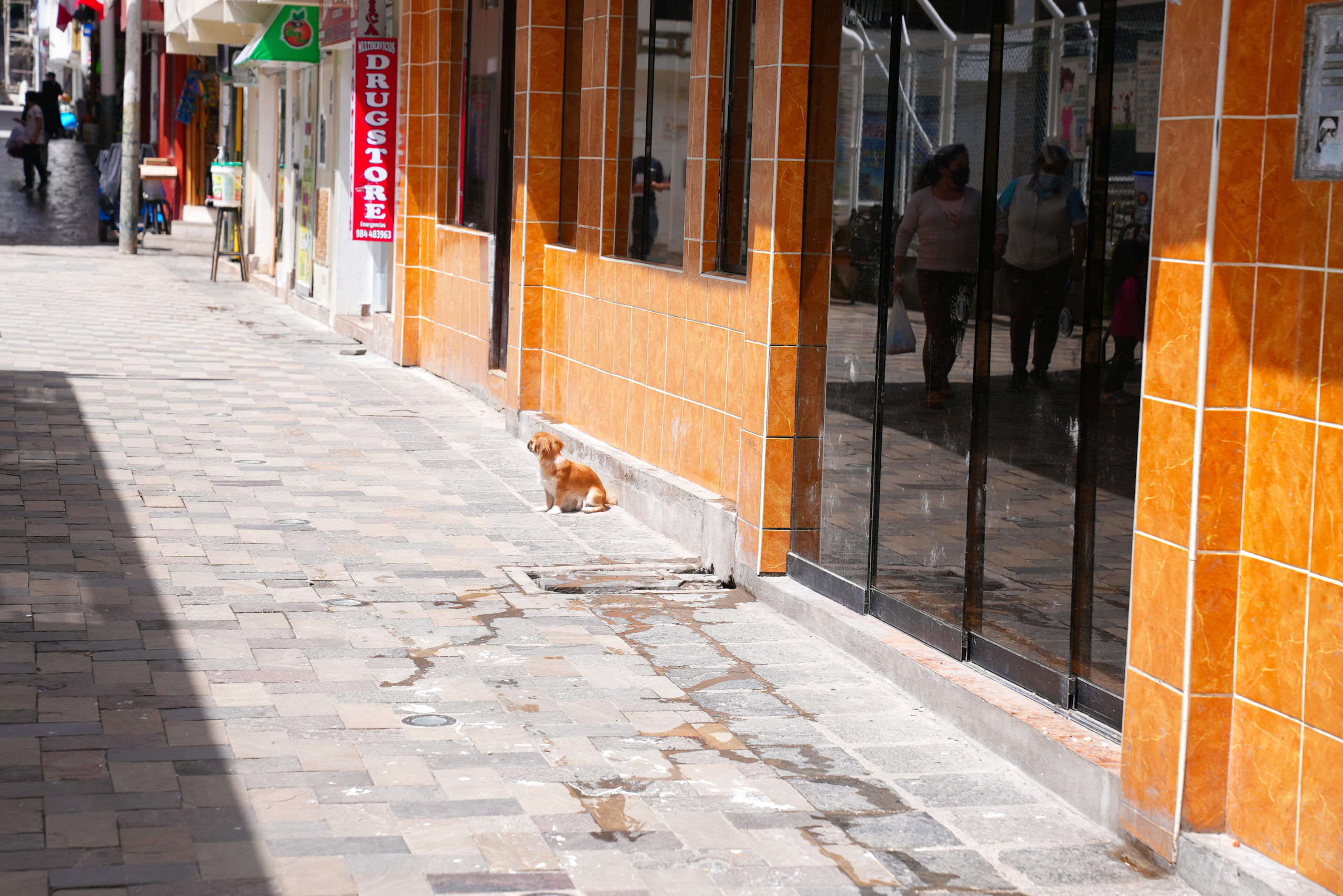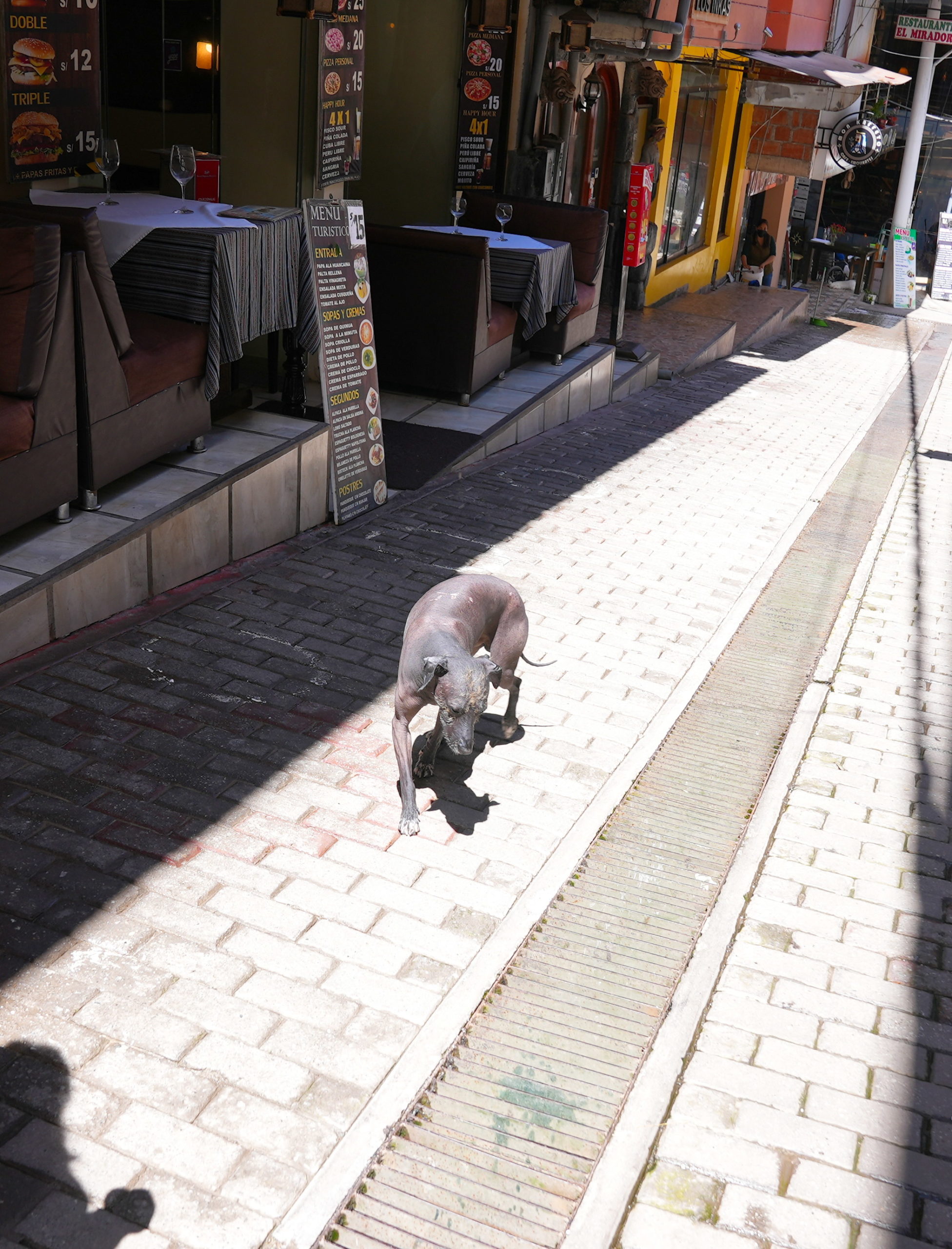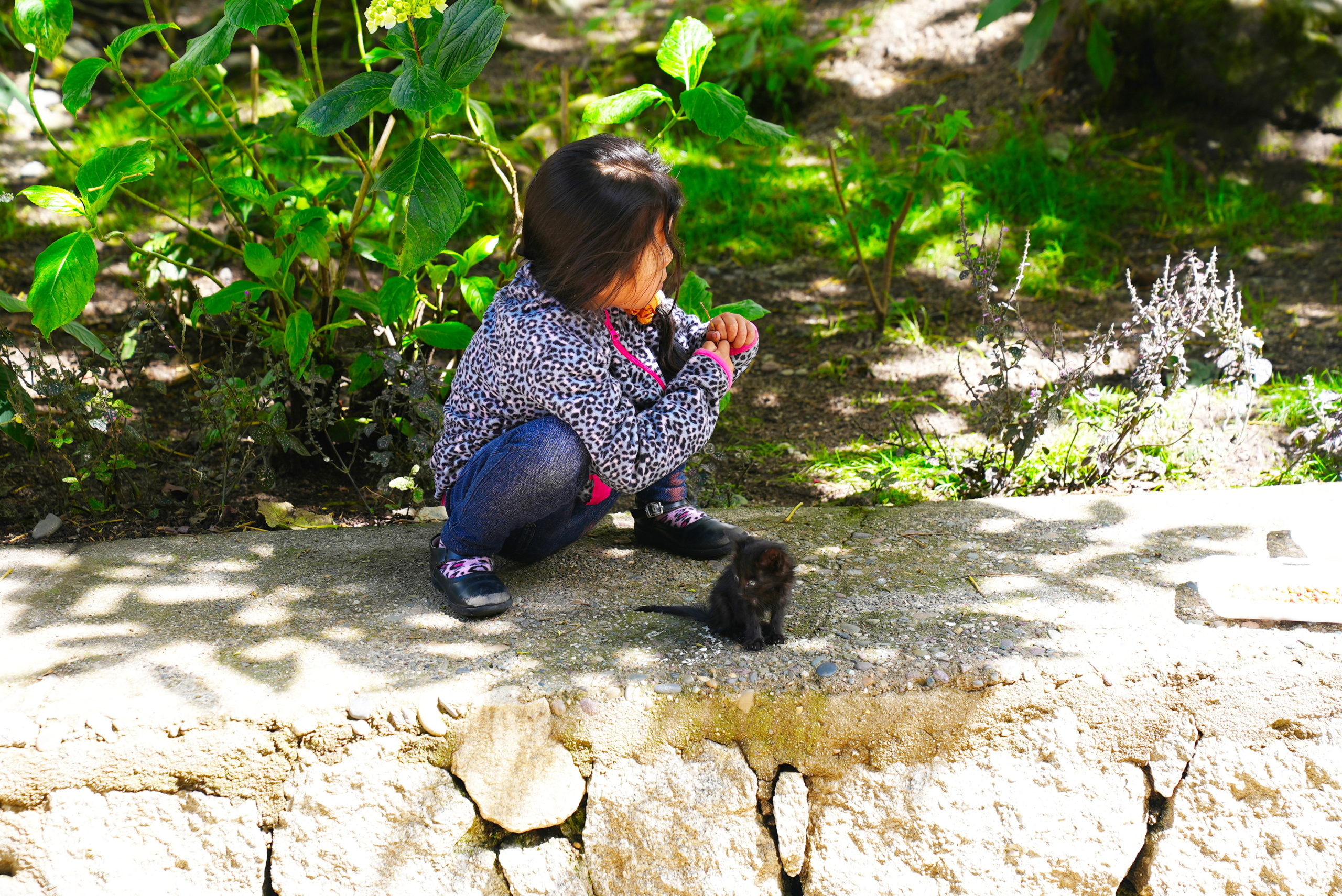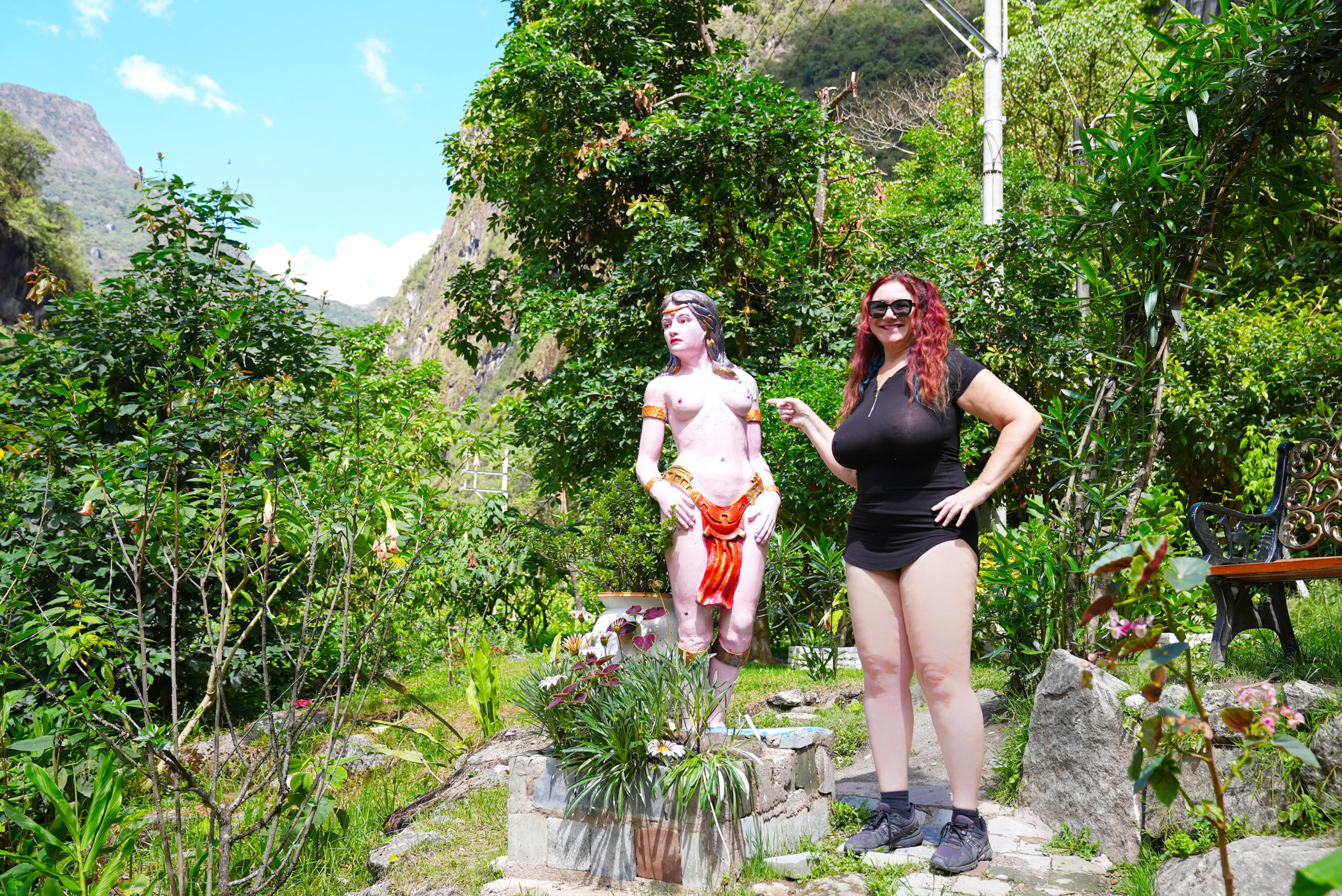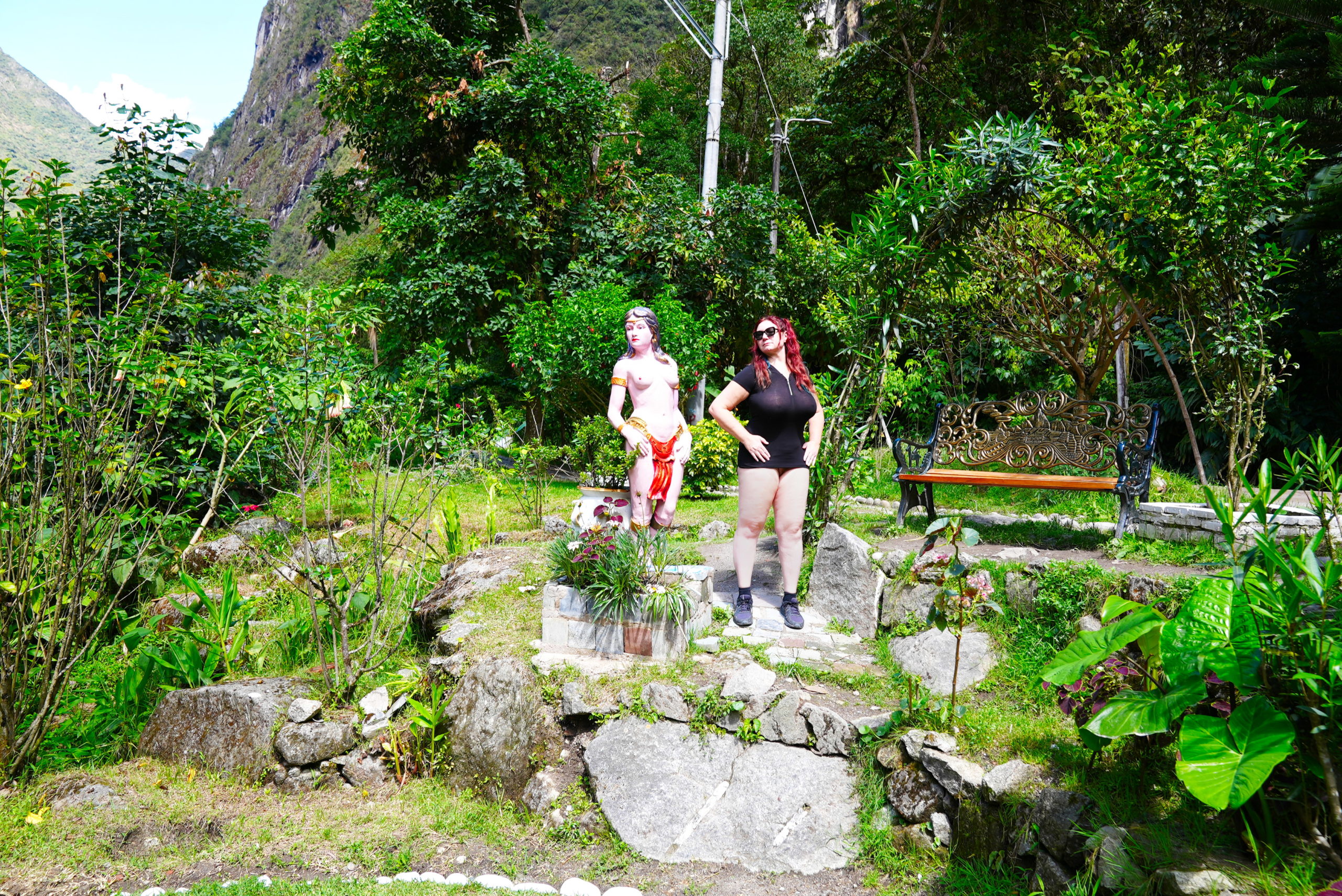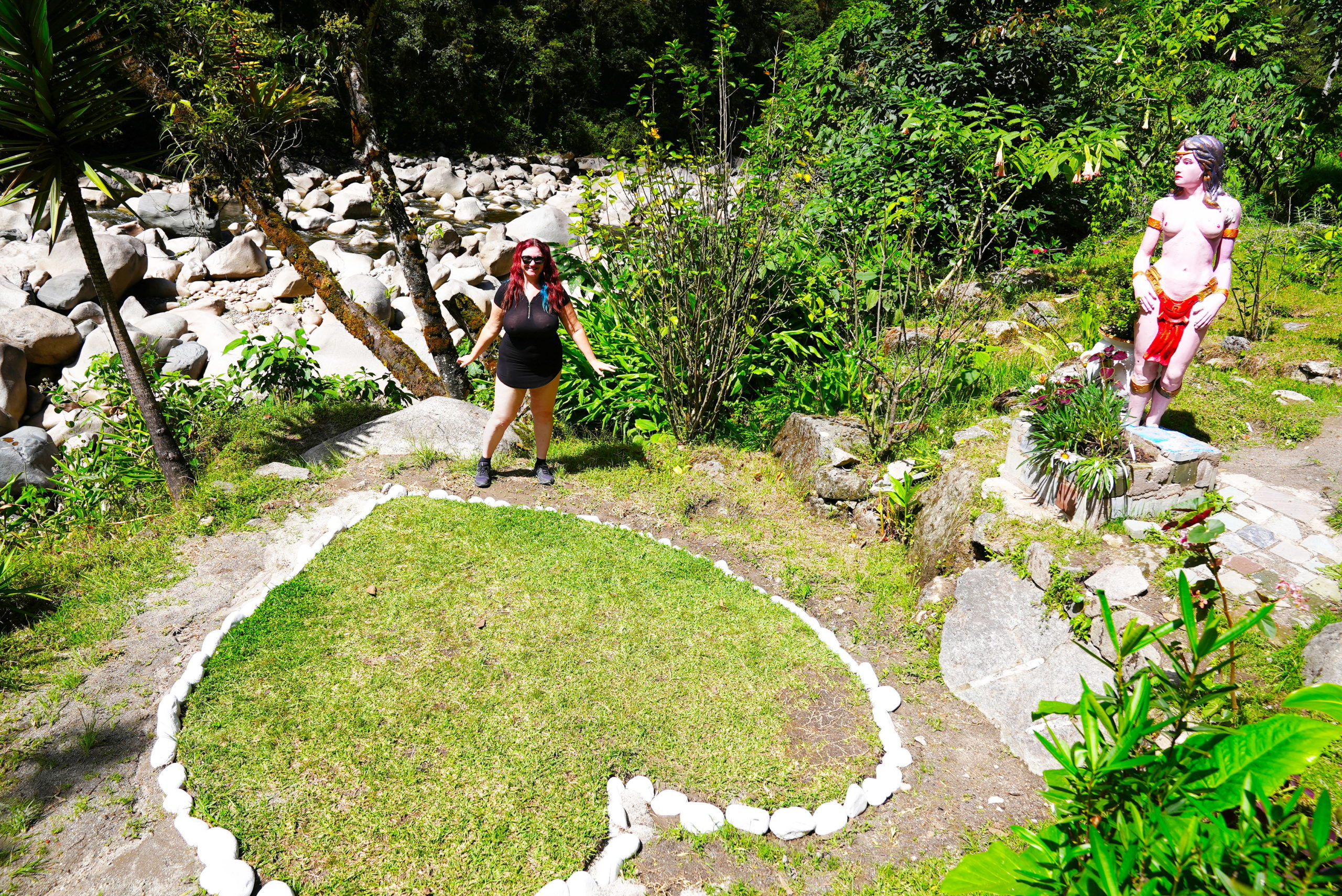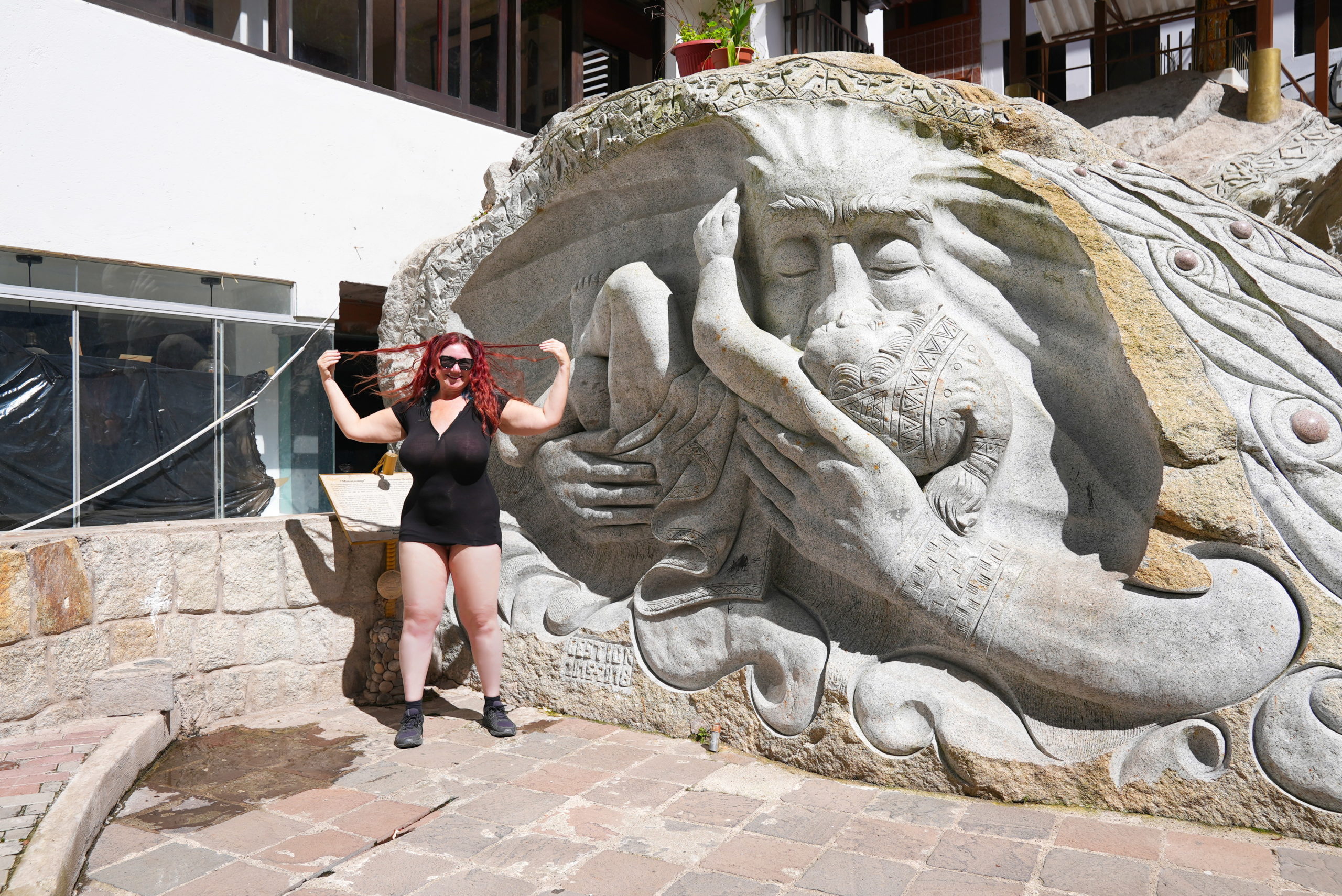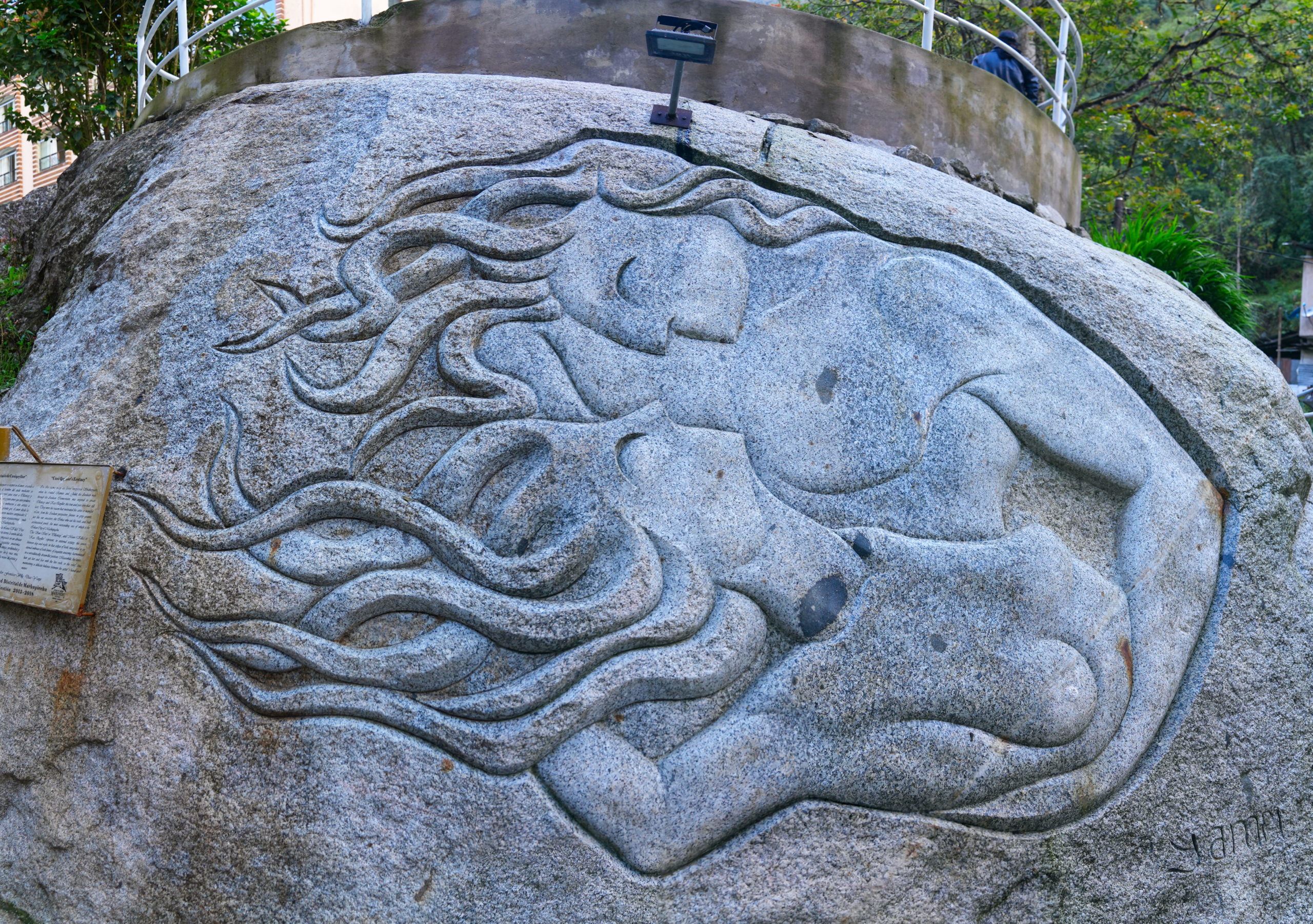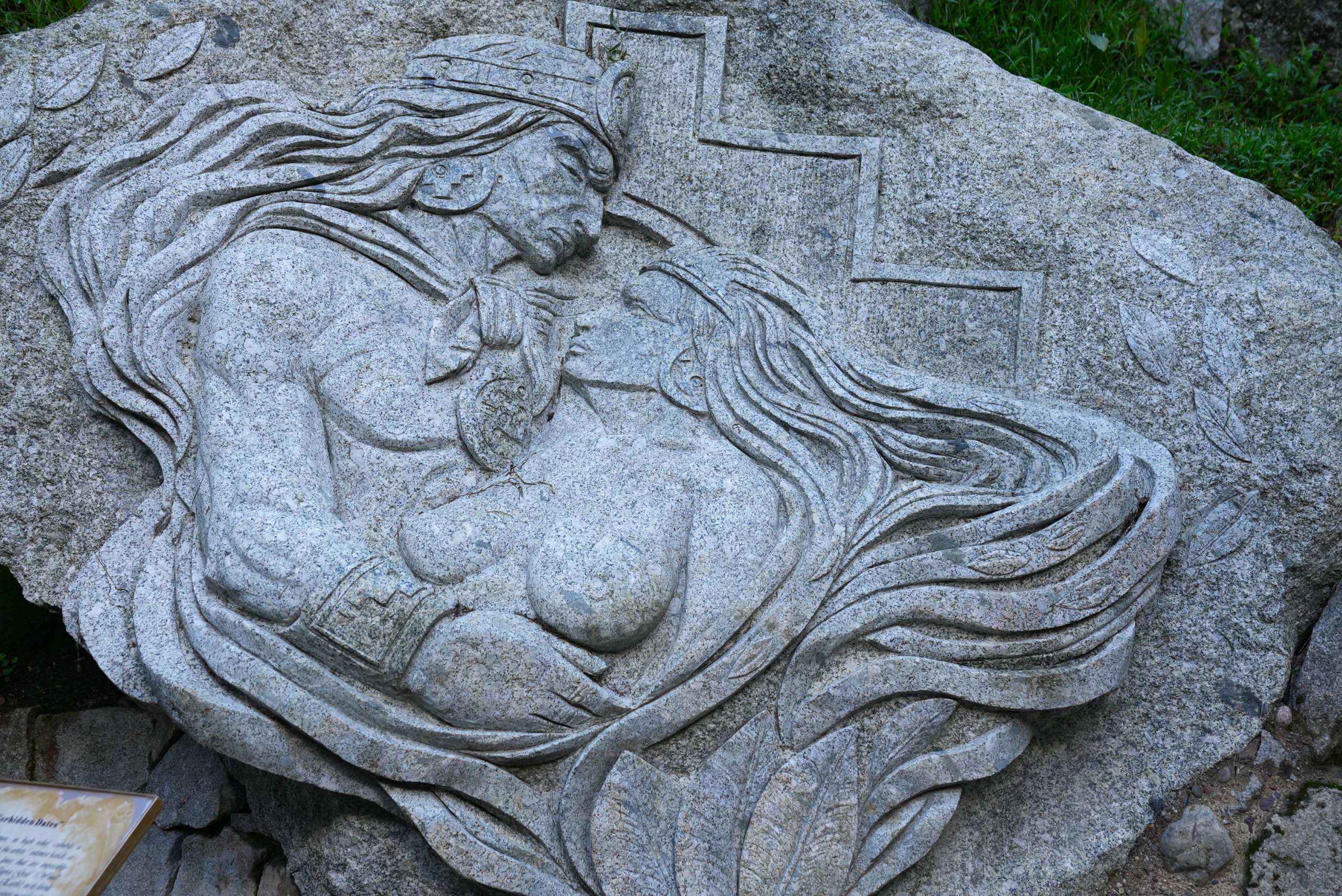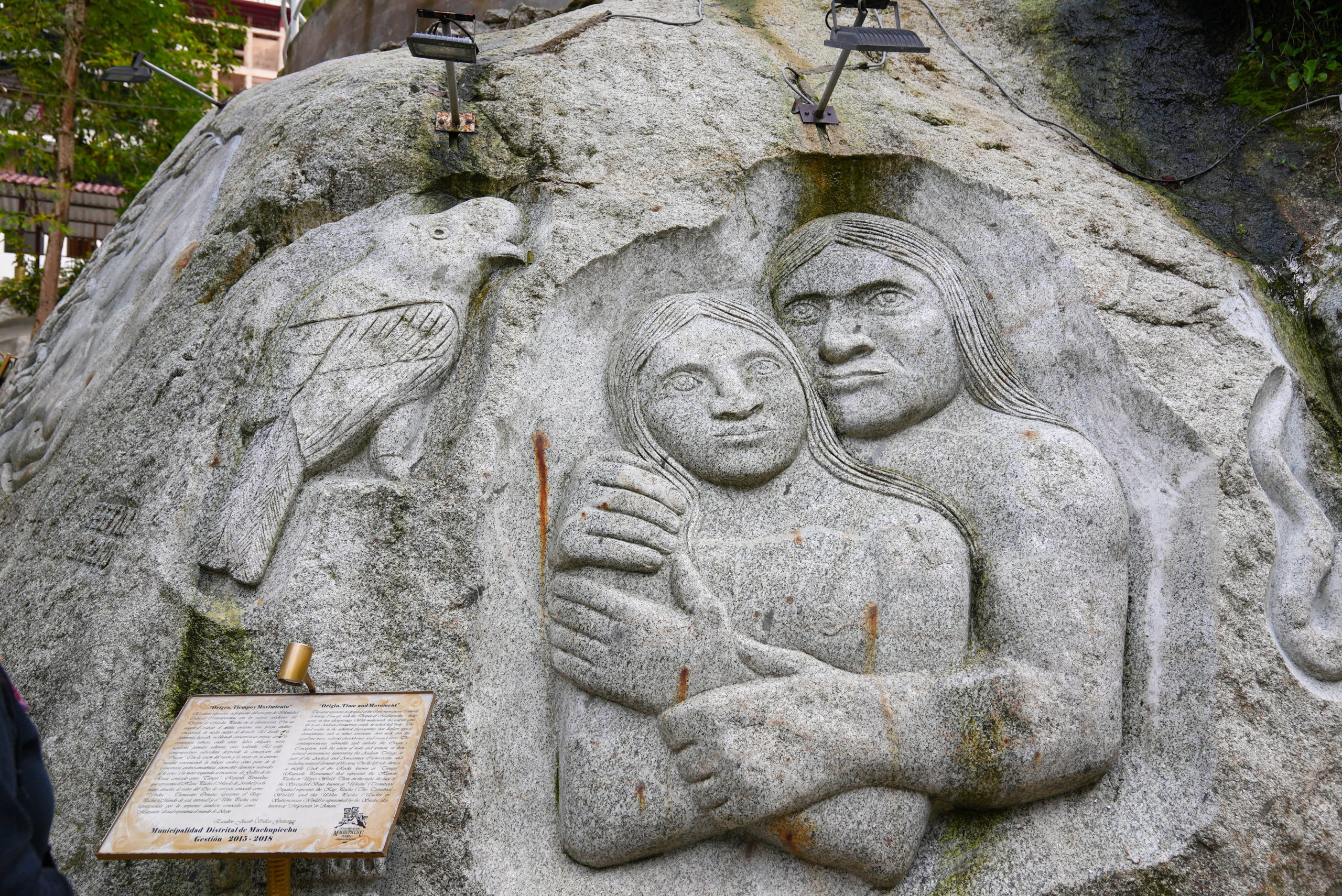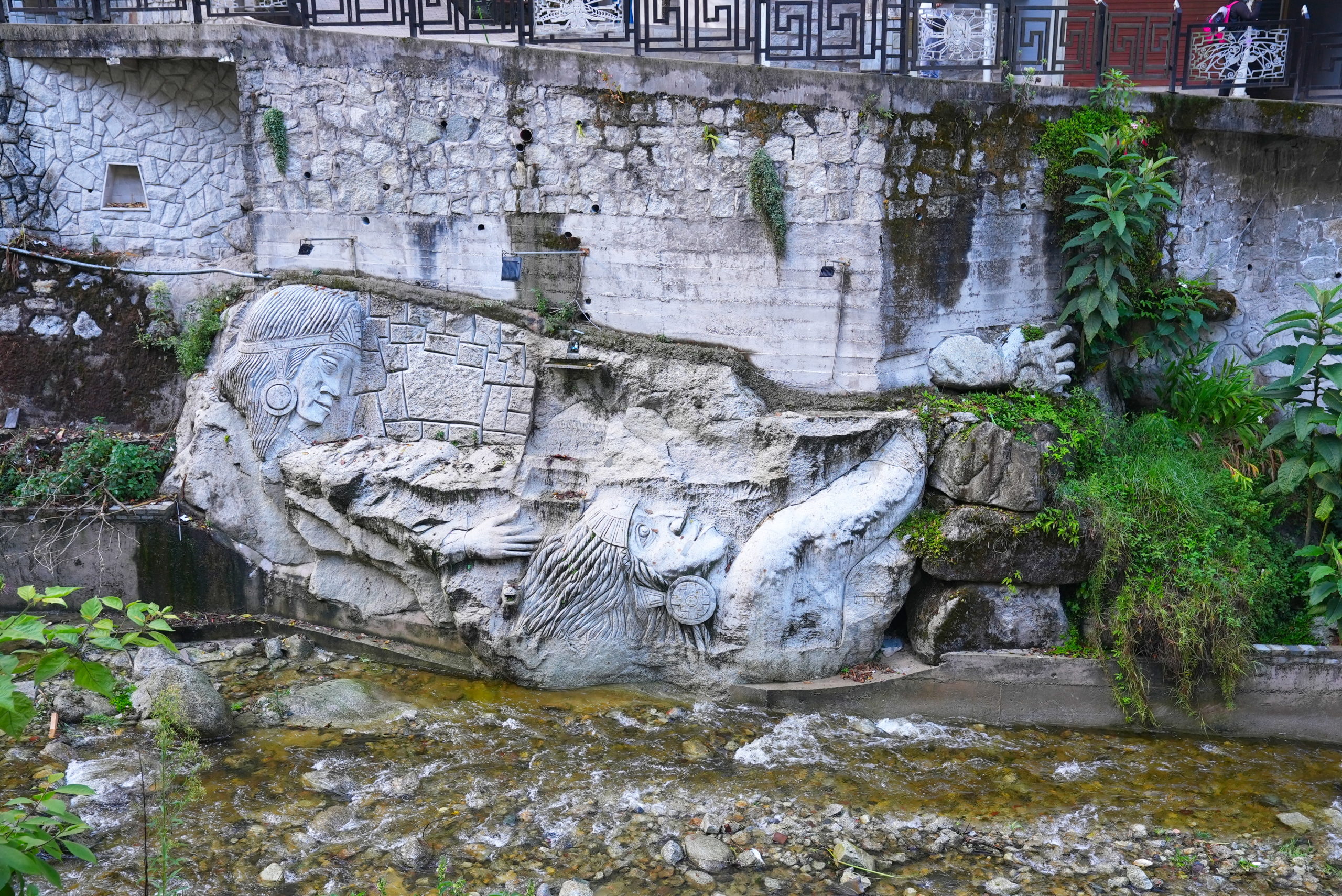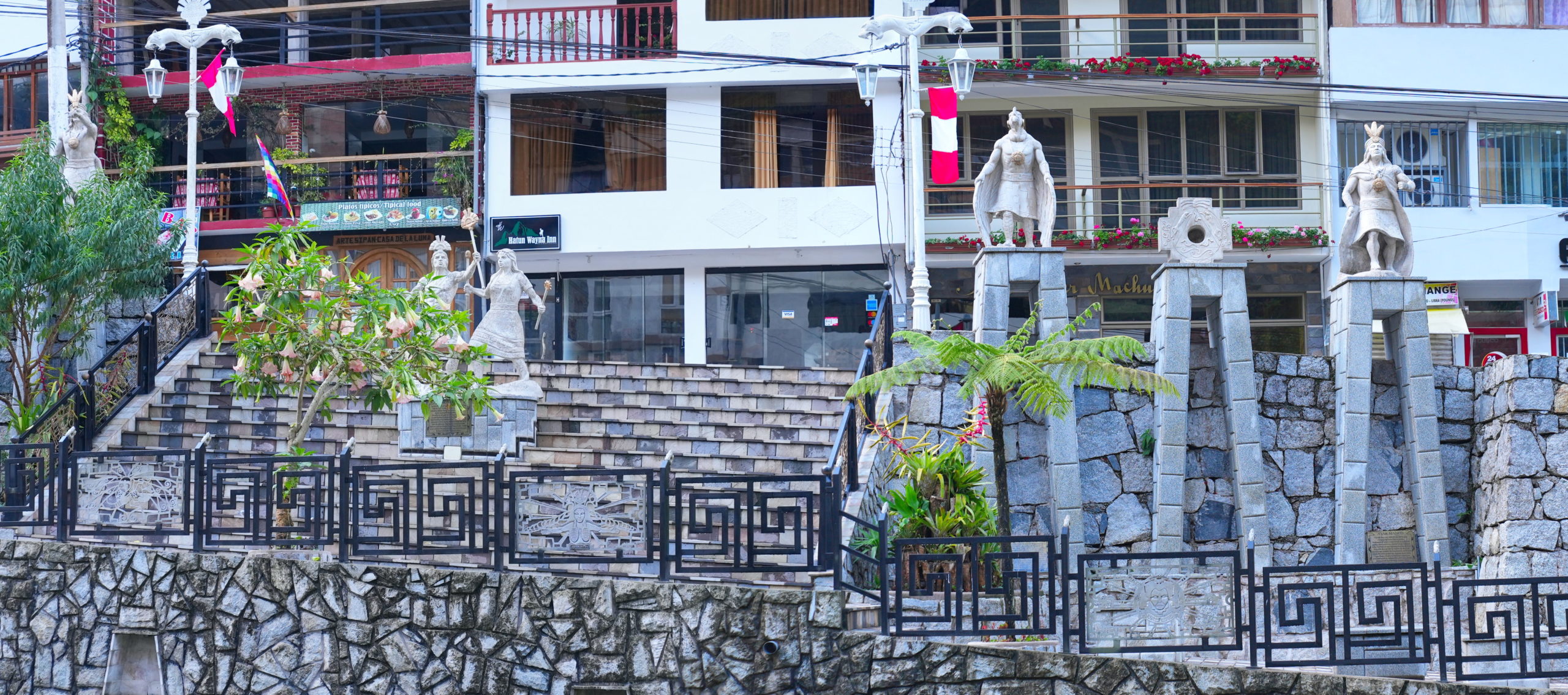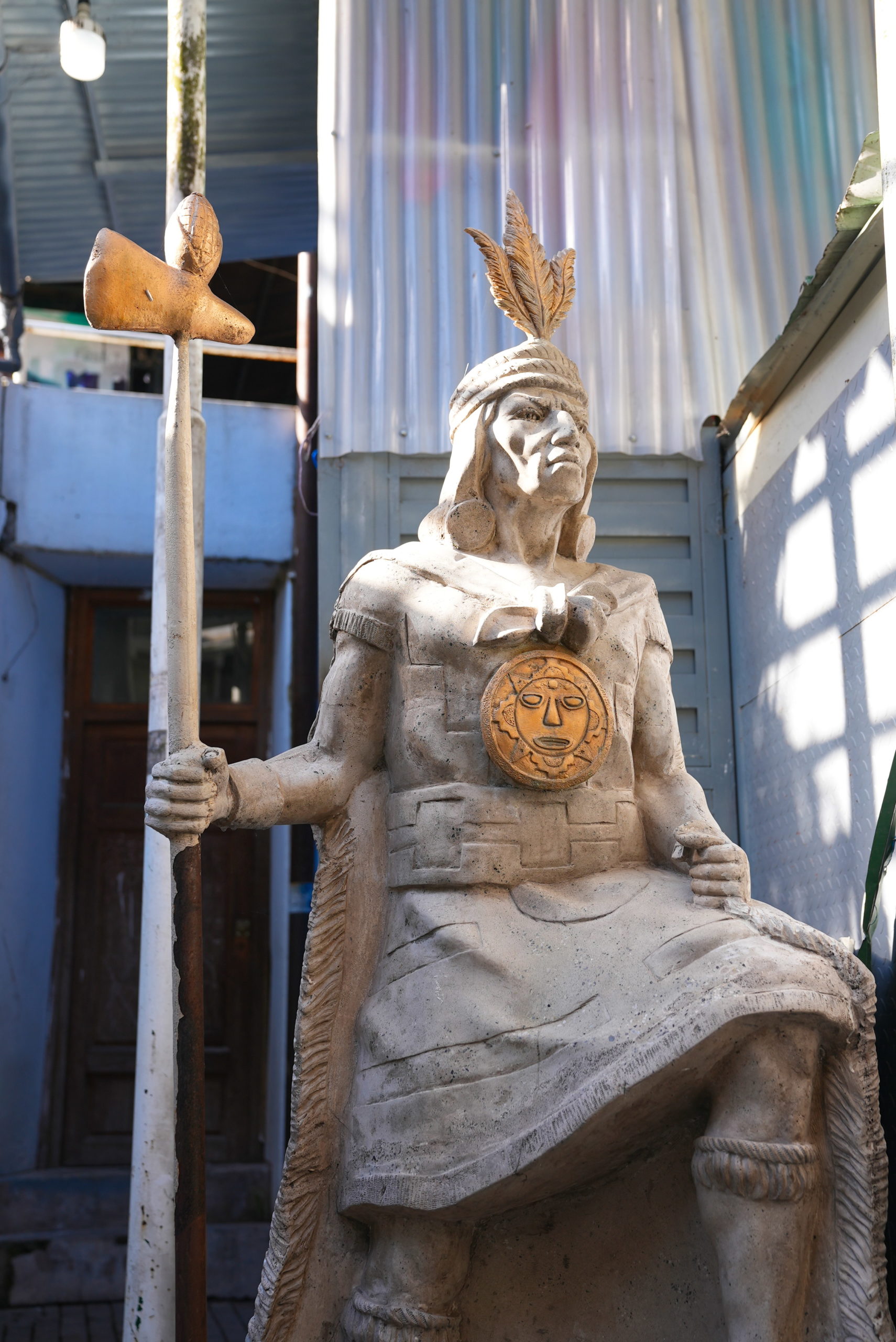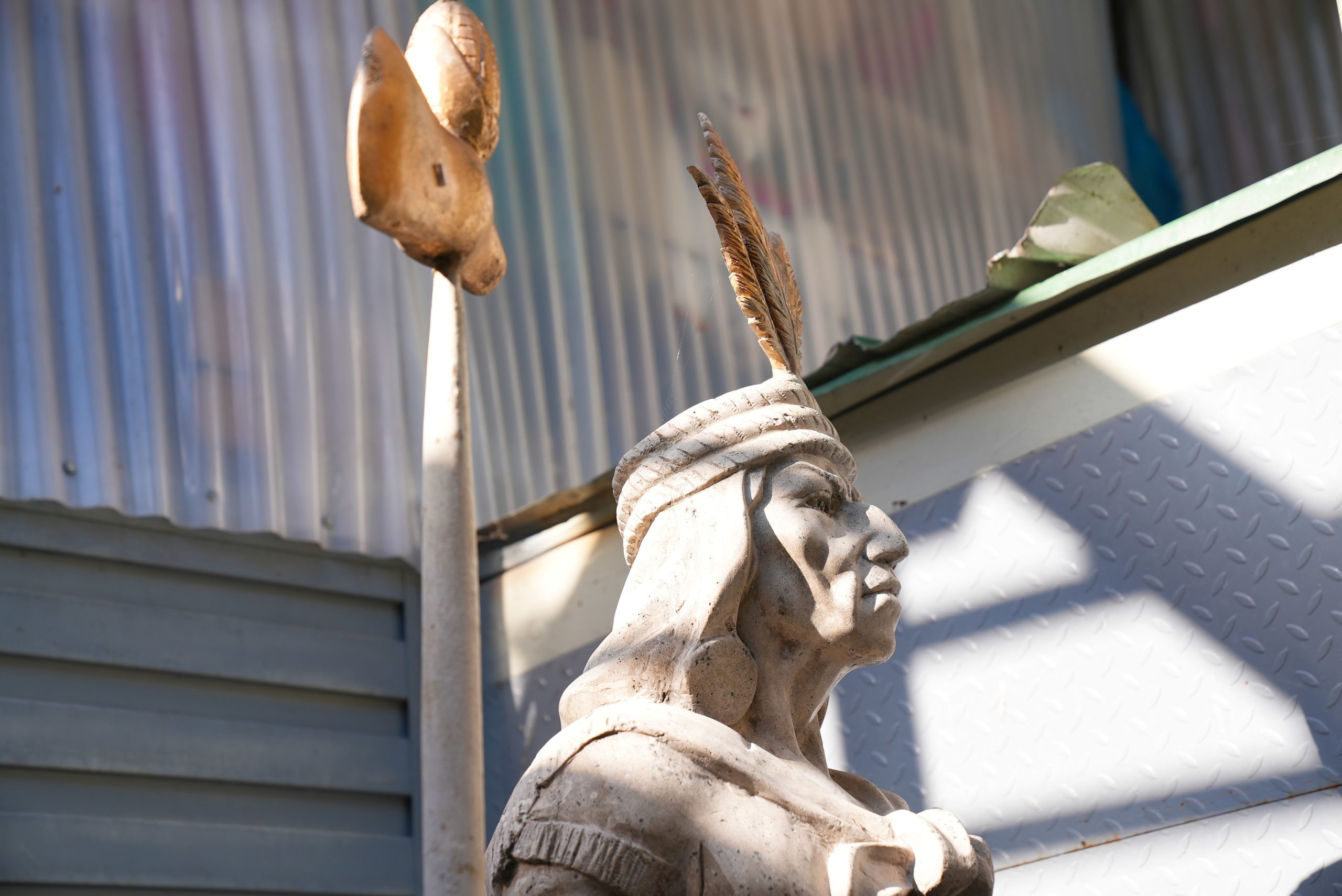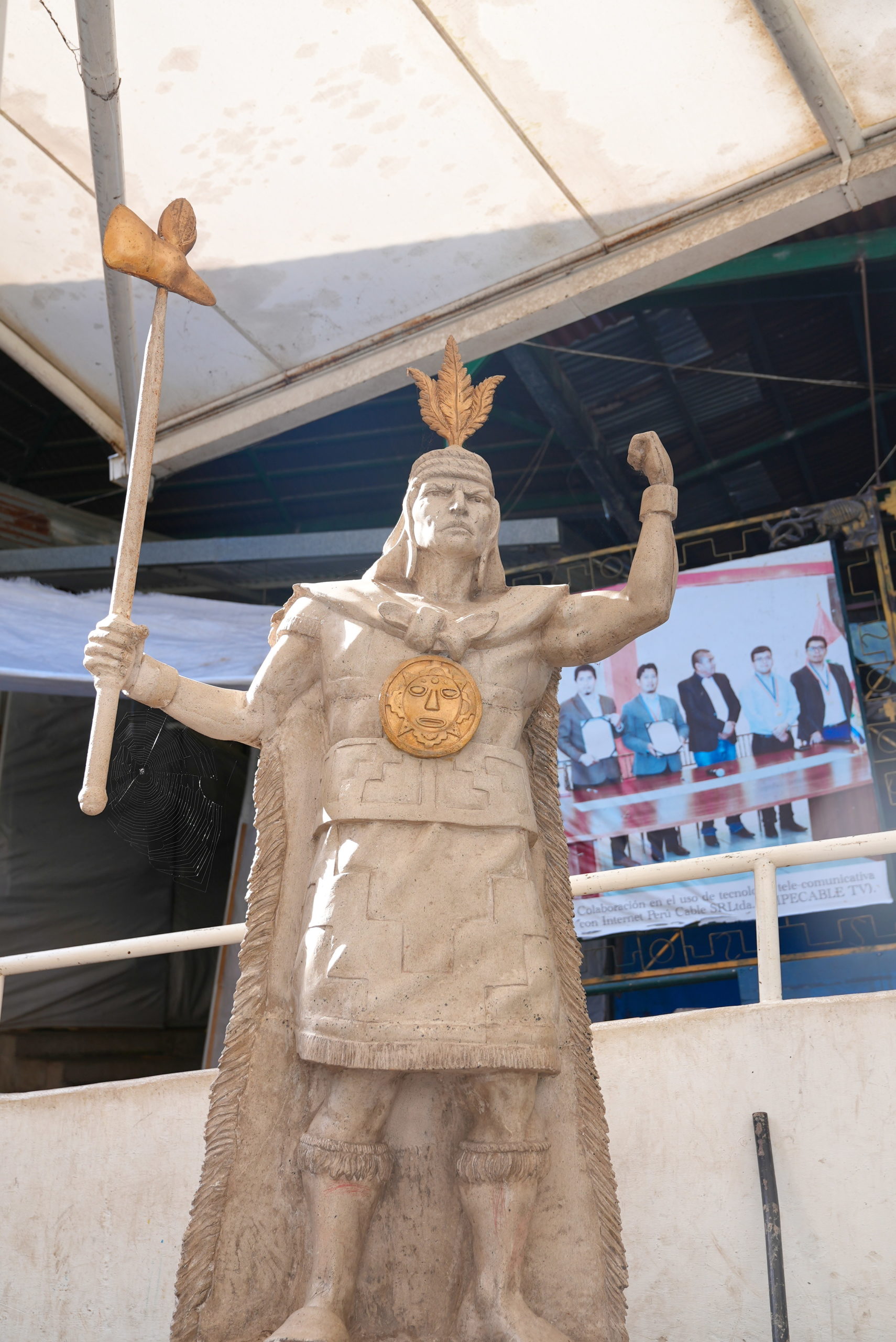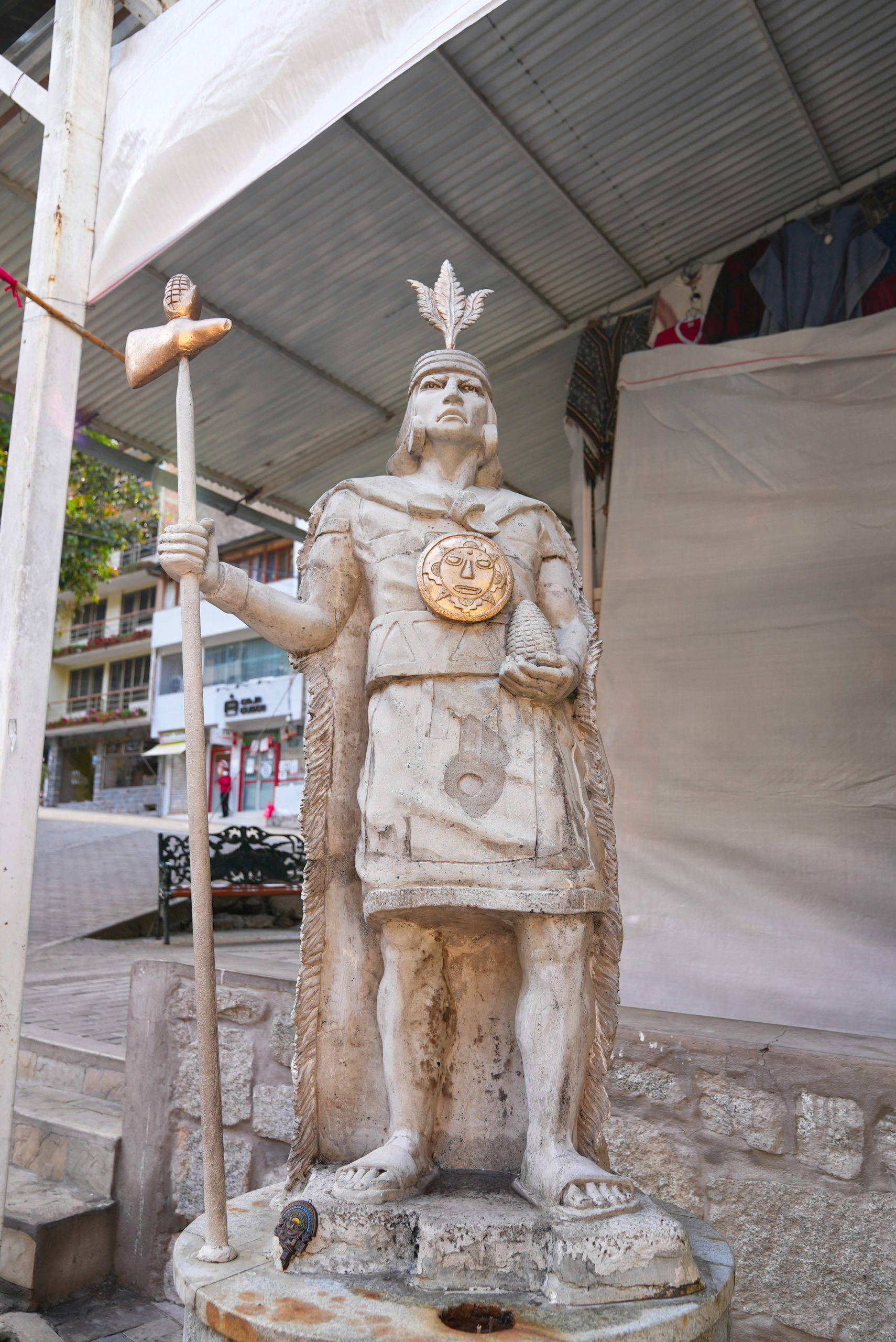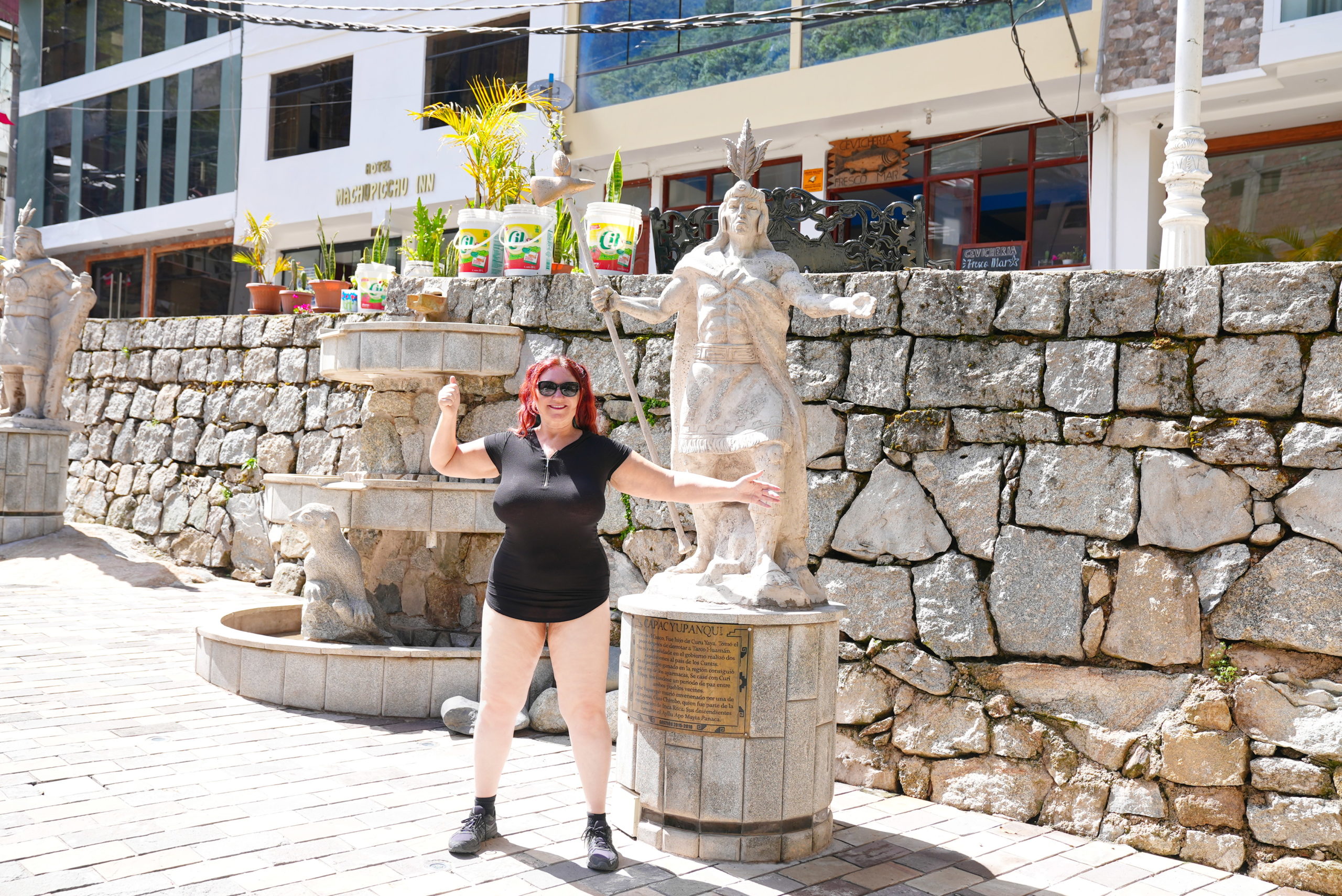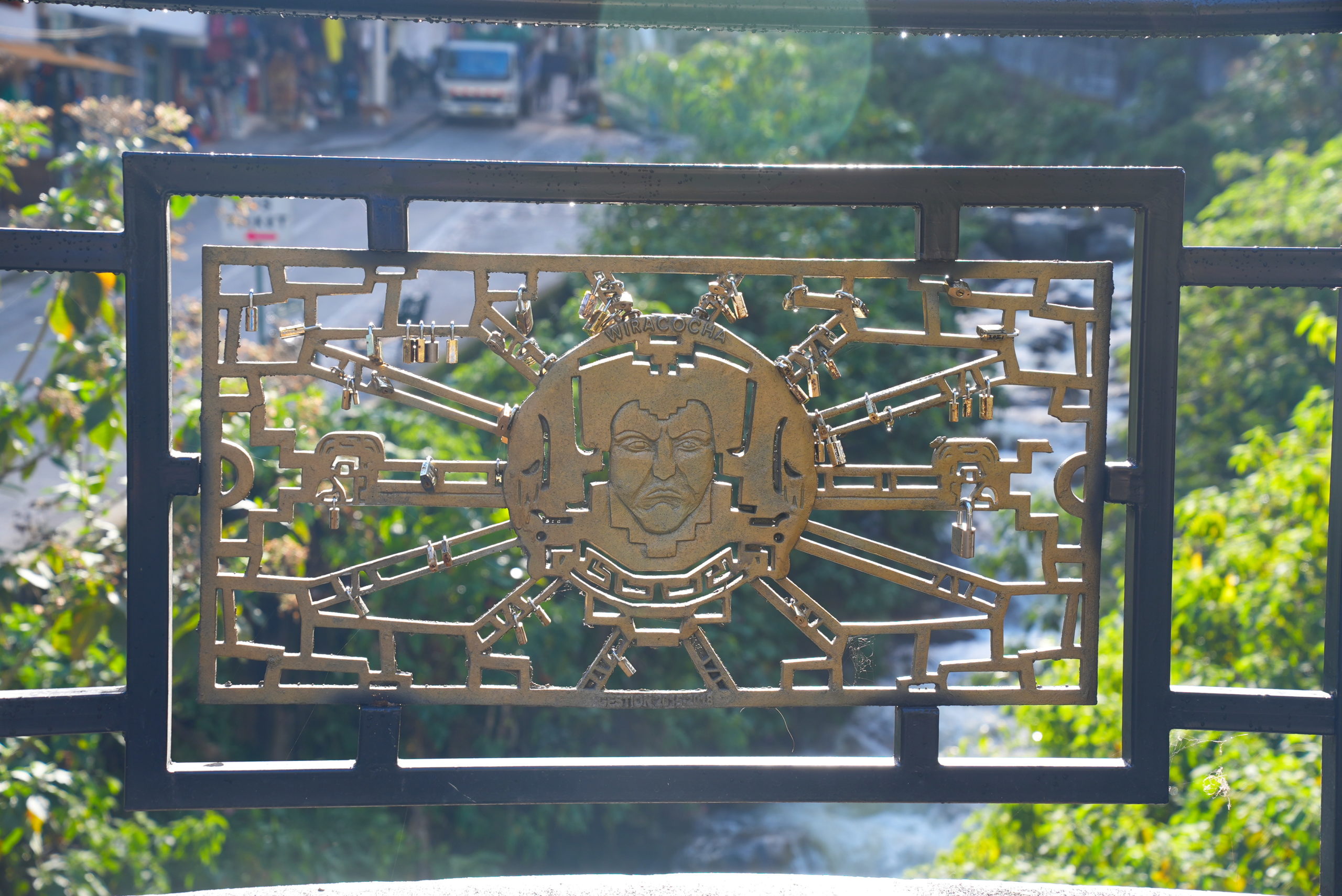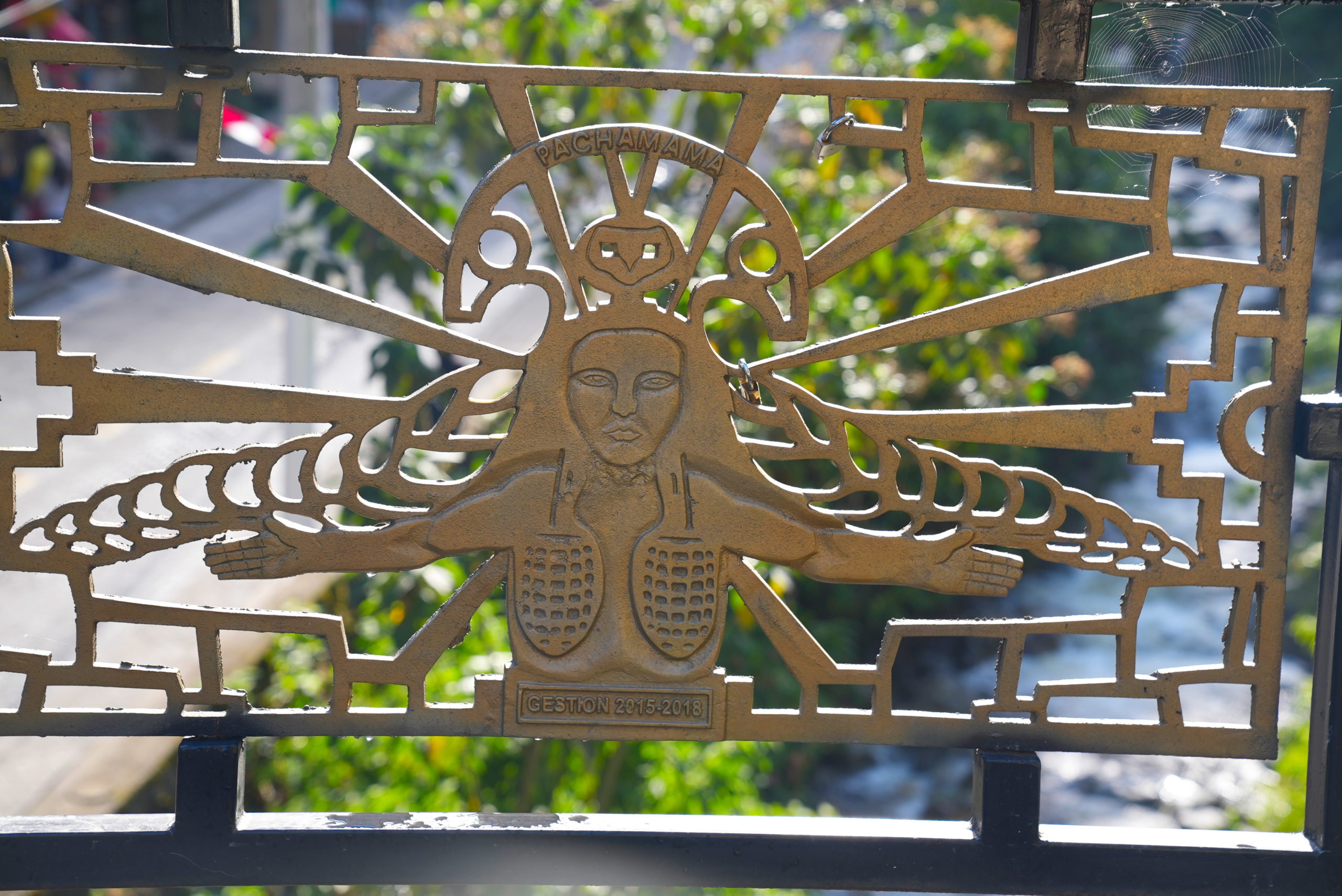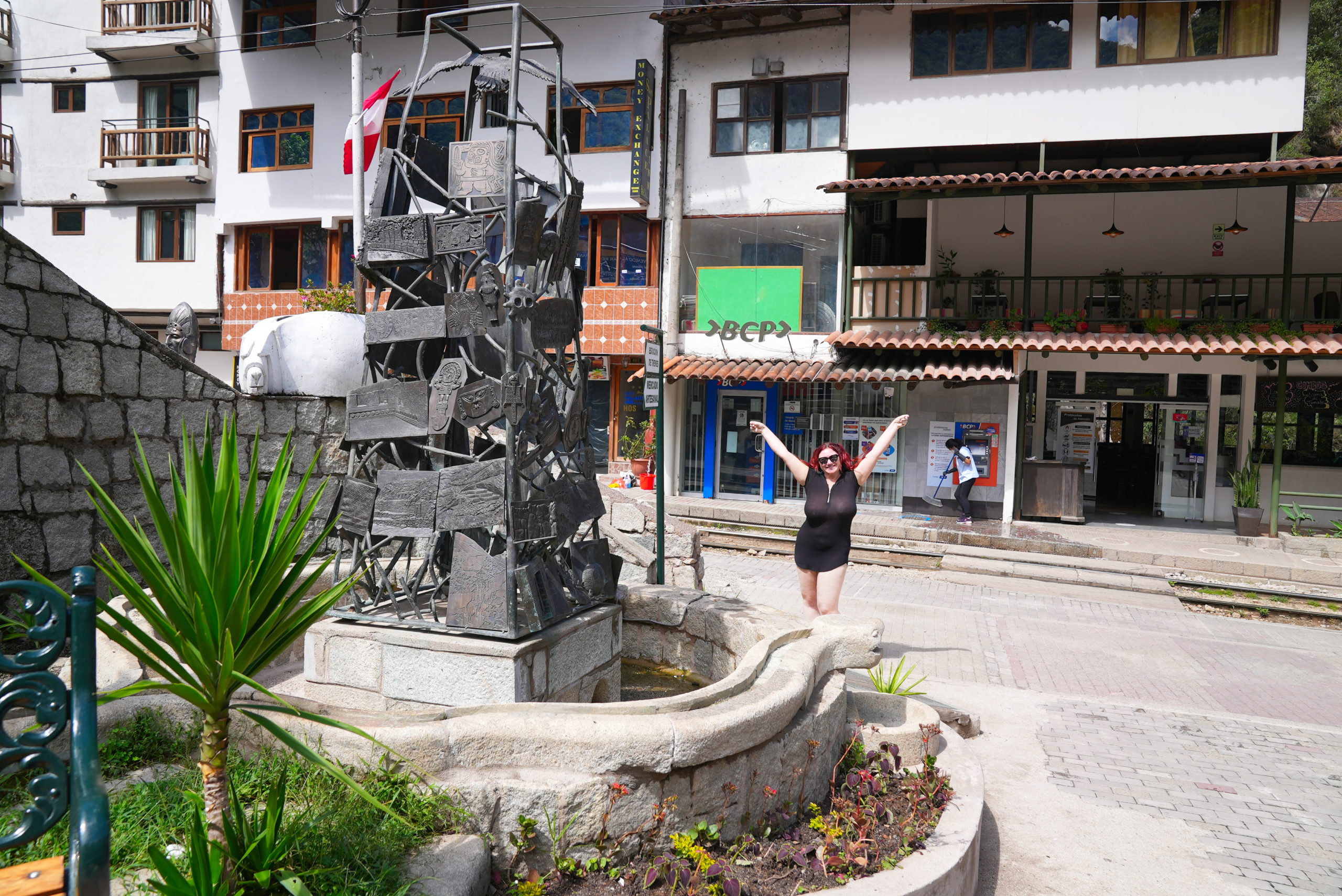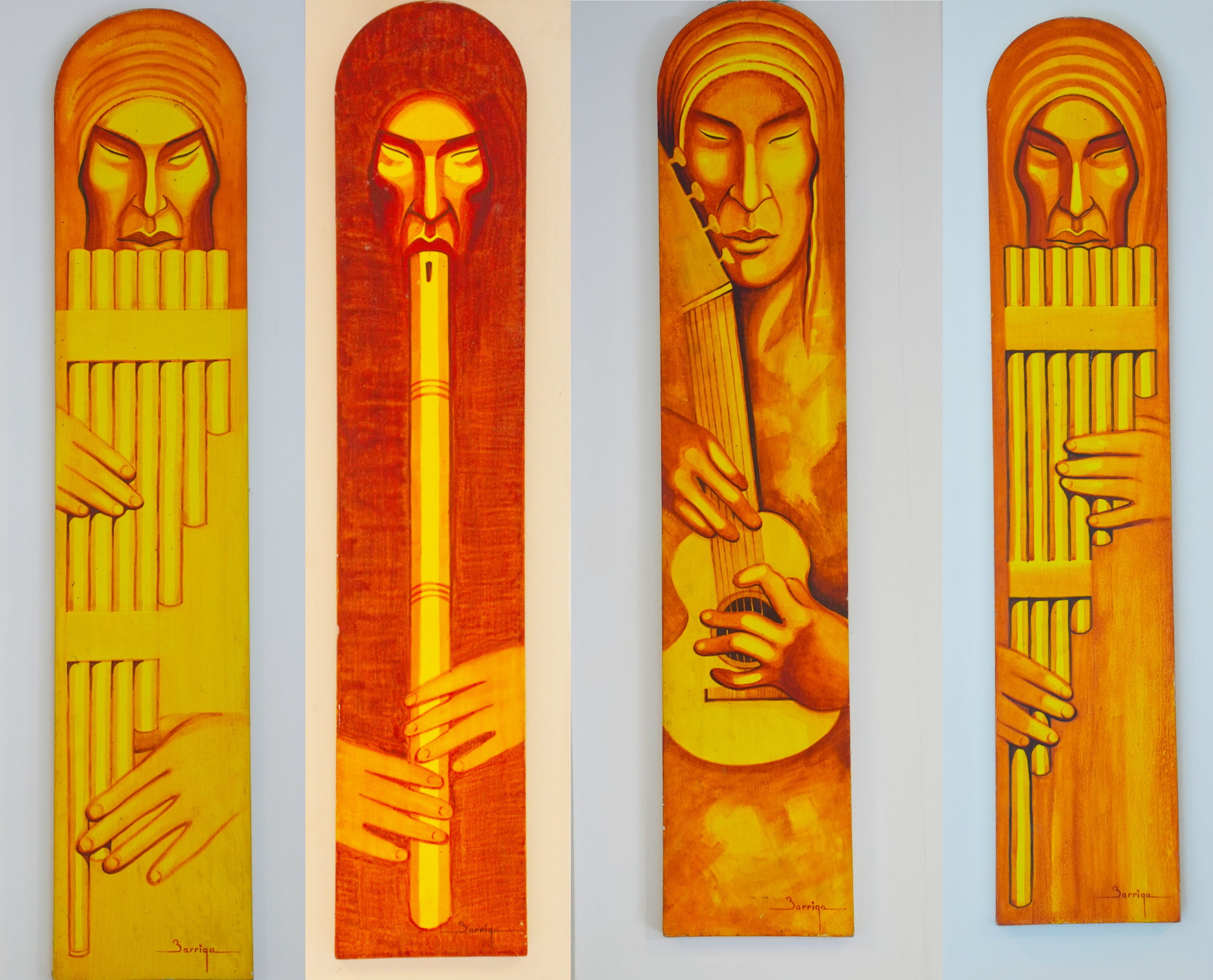Aguas Calientes, denominada Machu Picchu-Pueblo para diferenciarla de la zona arqueológica, es una localidad peruana capital del distrito de Machupicchu, ubicado en la provincia de Urubamba en el departamento del Cuzco. Es la principal vía de acceso al santuario histórico de Machu Picchu.
Aguas Calientes serves as a terminal for the PeruRail and Inca Rail passenger train service from Cusco. Trains serve locals and tourists arriving from Cusco and Ollantaytambo to visit Machu Picchu. A sheltered souvenir market is adjacent to the train station. Avenue Pachacutec is the main and only thoroughfare of the town, connecting the baths to the town’s main square.
There are no cars in the town, as there is no road access. The only motorized transport are the minibuses that take tourists up the mountain to the ruins; they were brought in by train.
Okay, we are here, so let’s take a look around.
The first thing you might notice about Aguas Calientes is that it is surrounded by mountains. Large mountains. Actually, they are hard to miss.
We are staying at the Taypikala Boutique Machupicchu hotel, and this is the view from our room. Ignore the shanty town, and look instead to the distant view.
This is the same view at night. Pretty cool, eh?
Yup, there is a large variety of beautiful locations here at the base of Huayna Picchu.
You noticed the town, right? Let’s take a closer look.
The Urubamba river (which we saw when we visited Lamay) passes through this small town, and the friendly folks have provided pleasant walkways for us. Behind me is one of the nicer hotels.
Since there are no horseless carriages here, the streets tend to be narrow. Note that if you are in a wheelchair, you’re in for one wild ride.
- The market barely accommodates two people.
- A caricature of an oriental fellow as shown above would be considered racist in America, even though humans don’t really have races and orientals don’t typically have bright red hair. (We wonder if the owner, Mr. Chin, looks exactly like that.)
- Incas have their own kola. I was going to get some, but I’m not Inca. Sad.
- They have an antichresis room. You just don’t see that much since Roman times.
- That “Salida” sign is confusing…
We find an empty soccer field in the middle of a residential area. There are no bleachers. We don’t know why.
Just look at the photograph for a while. What about it makes sense?
The bottom floor is use as a commercial endeavor. The next floor shows evidence of occupation. The top is unfinished. Does the structure have power? Water and plumbing? Does this building style remind you of Machu Picchu…?
How is this possible? Why is this possible?
Okay, let’s move on.
As you recall, the Urubamba river runs through this town, and the friendly folks have provided pleasant pedestrian bridges for us.
Technically this should be considered a scenery photograph, but we are standing on a bridge and there is a bridge in the foreground…so, there.
The sun is in almost the same place, but we are on a different bridge. **Mind blown!**
There is one bridge near the bottom that accommodates busses and, more importantly, the choo-choo.
You are probably noticing that all the pedestrian bridges are built with the same design. Boring, but functional.
Many of these locks have writing on them, and the writing seems to indicate the identities of two people. Beyond that, this shall remain as open to interpretation as the entire Inca culture.
We have seen this before in Montana and in Frankfurt. This is an example of convergent evolution.
Me, showing off my blue hair in front of a bridge. That is all. ?
Yes, there are other people who pose on bridges.
Okay, we’ve done all the bridges we can. Let’s continue, shall we?
In many places in Peru, we have seen unescorted dogs minding their own business, interacting only occasionally with people. Kind of like cats…
This fellow joins us for a quick photograph, then goes on his way. And that’s all we know about him.
This fellow is doing his best to blend in with the scenery.
This is the best photograph I am able to take of the Peruvian Hairless Dog. And, no, that is not a shadow of a penis.
Okay, one photograph of a cat…because that the only cat we can find.
But Aguas Calientes is more than just buildings, bridges, and critters. There is quite a display of post-Columbian art here!
Just outside of town we find a statue of a typical Inca woman. With plucked eyebrows. Wearing lipstick. We are confused.
I strike a similar pose, also looking sad. Why am I sad? Because she is sad. Why is she sad? I don’t know.
We investigate, and discover the awful truth.
You see, many years ago, the Indian Maiden had a servant who she tormented, ordering him around.
Indian Maiden: Servant, polish my horse’s saddle. I want to see my face shining in it by morning.
Servant: As you wish.
Yes, “As you wish” was all he ever said to her.
Indian Maiden: Servant, fill these with water…please.
Servant: As you wish.
That day she was amazed to discover that when he was saying “As you wish”, what he meant was, “I love you.” And even more amazing was the day she realized she truly loved him back.
However, the servant had no money for marriage, so he packed a few belongings and left to seek his fortune across the sea. It was a very emotional time for the Indian Maiden.
Indian Maiden: I fear I’ll never see you again.
Servant: Of course you will.
Indian Maiden: But what if something happens to you?
Servant: Hear this now: I will always come for you.
Indian Maiden: But how can you be sure?
Servant: This is True Love. You think this happens every day??
But the servant didn’t reach his destination. His ship was attacked by the dread pirate Roberts, who never left captives alive. When the Indian Maiden got the news that the servant was murdered, she built a monument to her love, and spent the rest of her life lamenting her foolish belief that True Love would prevail.
…You know, as I think about it, I might be confusing this with another story. Oh, well…
The Sun God kisses the Moon God. The Moon God is wearing a hat. I’m posing with my hair.
Here we see again the Sun and the Moon, this time in ecstasy.
This piece immortalized loves that are impossible to understand, uniting the Wind with Mother Earth. However, there is no explanation as to why their love is impossible to understand.
Here we have an Andean Amazonian couple, with a Little Cock of the Rocks watching them.
The fellow on the right is getting rid of his own demons and retaking his balance and achieving higher knowledge, via the spirit of water (the fellow on the left).
Across the river, we see statues that are not part of a rock face. Let’s take a closer look.
This is an artist’s westernized representation of one of the Inca Empire’s rulers. Note that the image differs significantly from contemporaneous images.
I do not understand the hole in his face.
Inca Roca did not look like this at all. What is the message here?
I’m pretty sure this is Inca Roca again, but this time he’s carrying a small bit of corn. I will not conjecture on what used to be attached to the hole in his garment.
Qhapaq Yupanki Inka‘s name in the Quechua language means “splendid accountant Inca”. I imagine the little guy had a high-pitched squeaky voice.
The great creator deity of pre-Inca and Inca mythology is represented here as being angry, for some reason.
The Earth Mother and fertility goddess also causes earthquakes. Are her breasts made of corn, or is corn dangling from a rope around her neck? Either way, “nice cobs” just doesn’t have the same feeling, does it?
We find a contemporary piece depicting the Andes with its many rhythms! I perform a spontaneous dance as the magic of this artwork moves my spirit.
At our hotel are a number of images depicting Mr. Spock’s more musical side, which is a fitting end to our series on Peru.
Until next time, tupananchikama.

